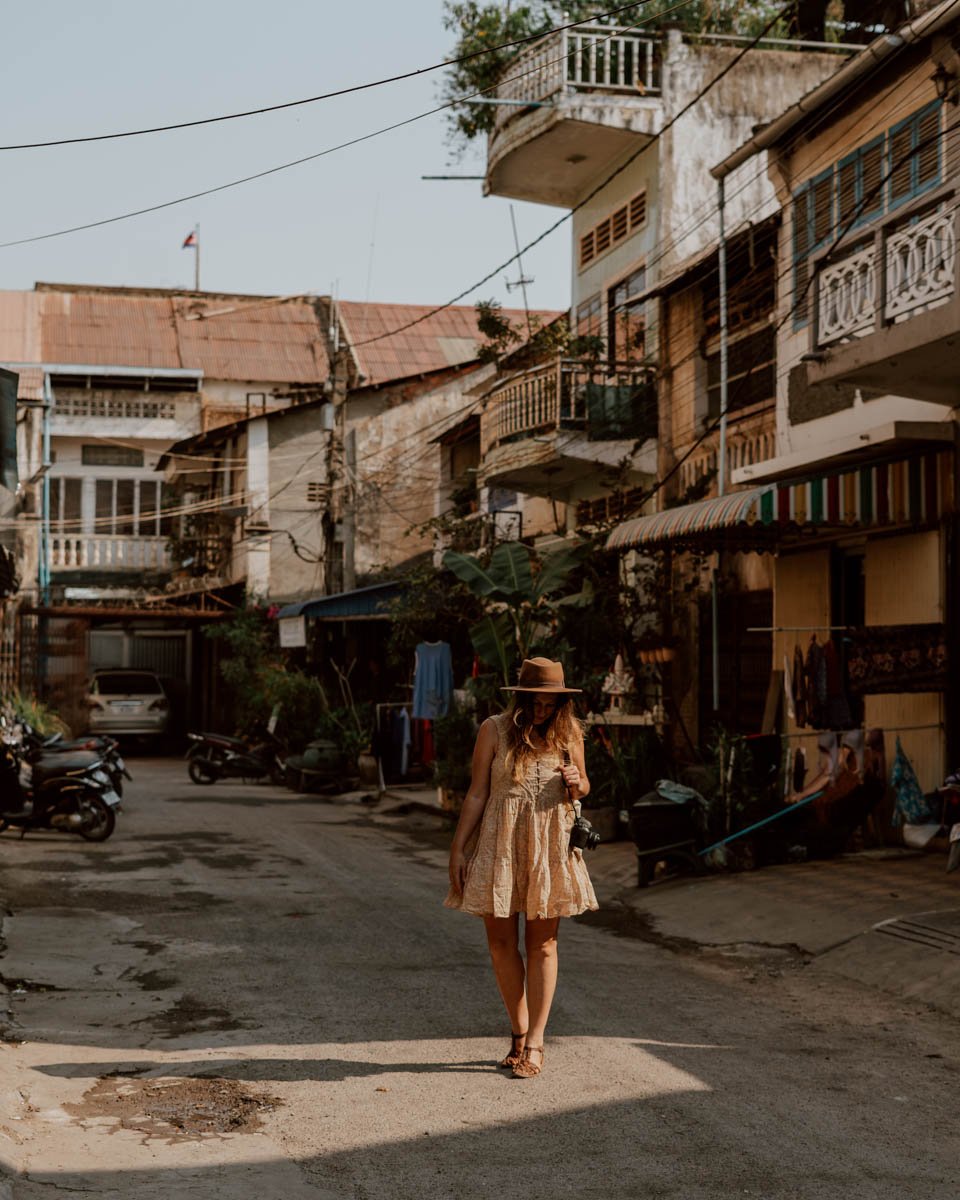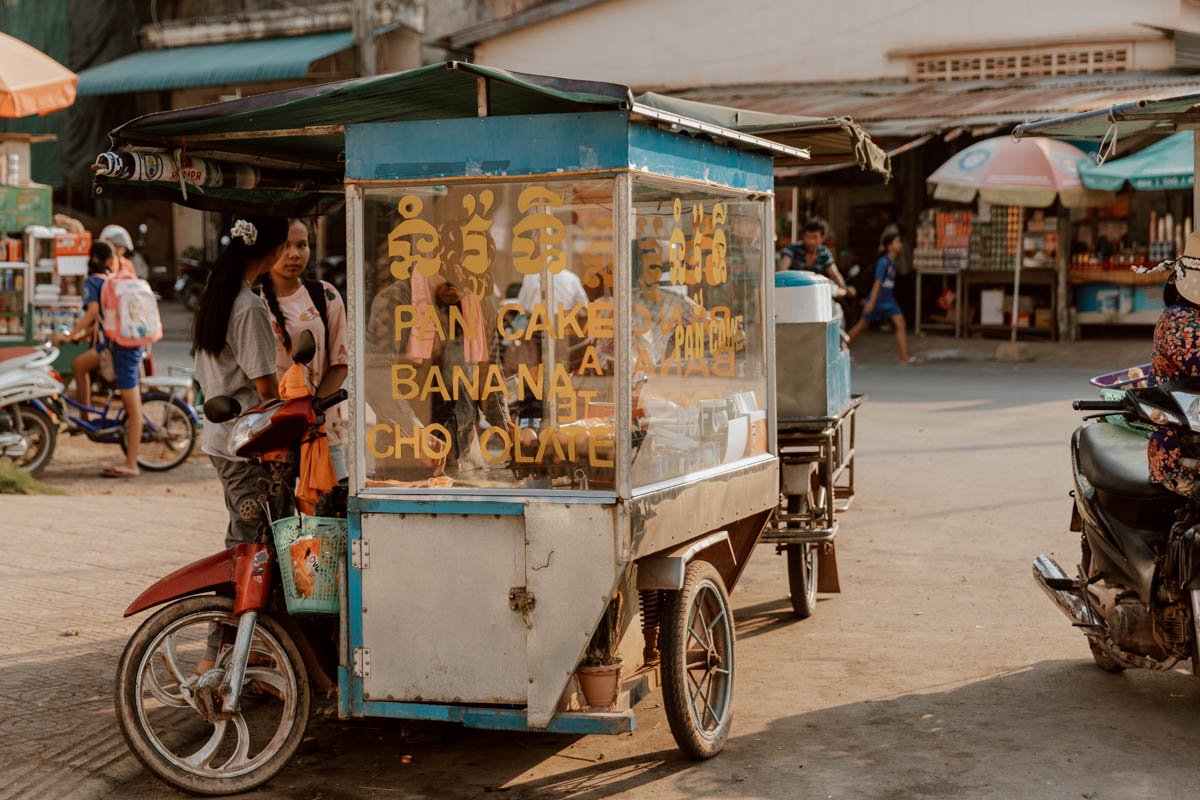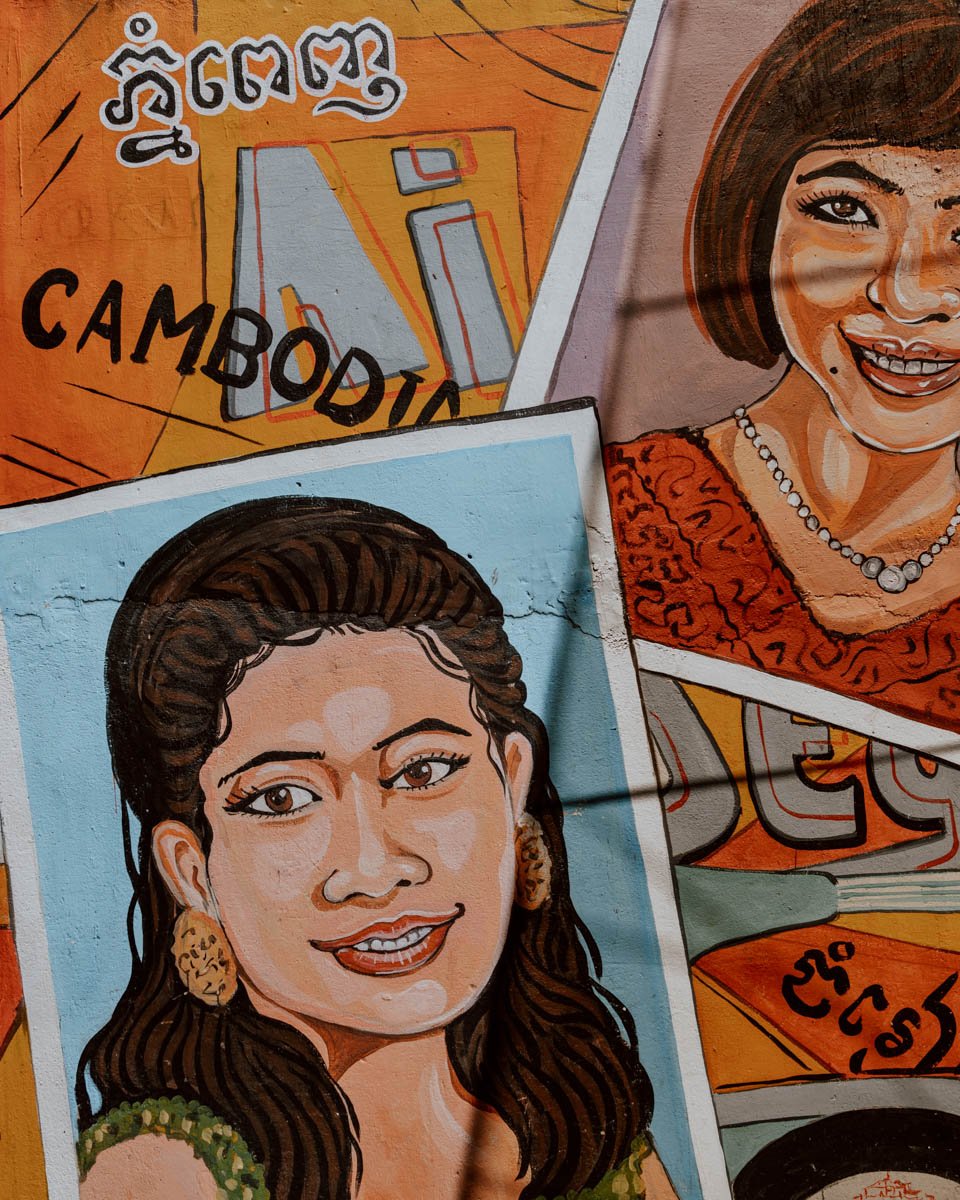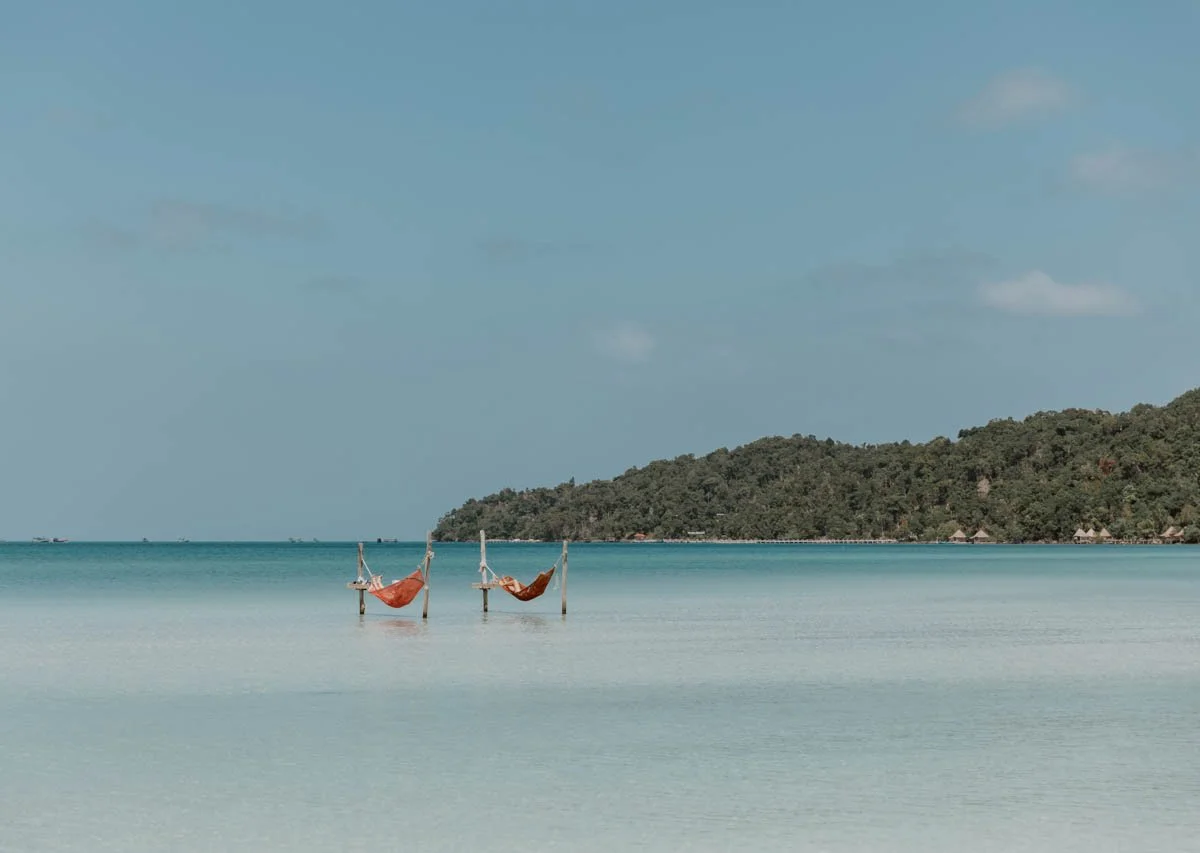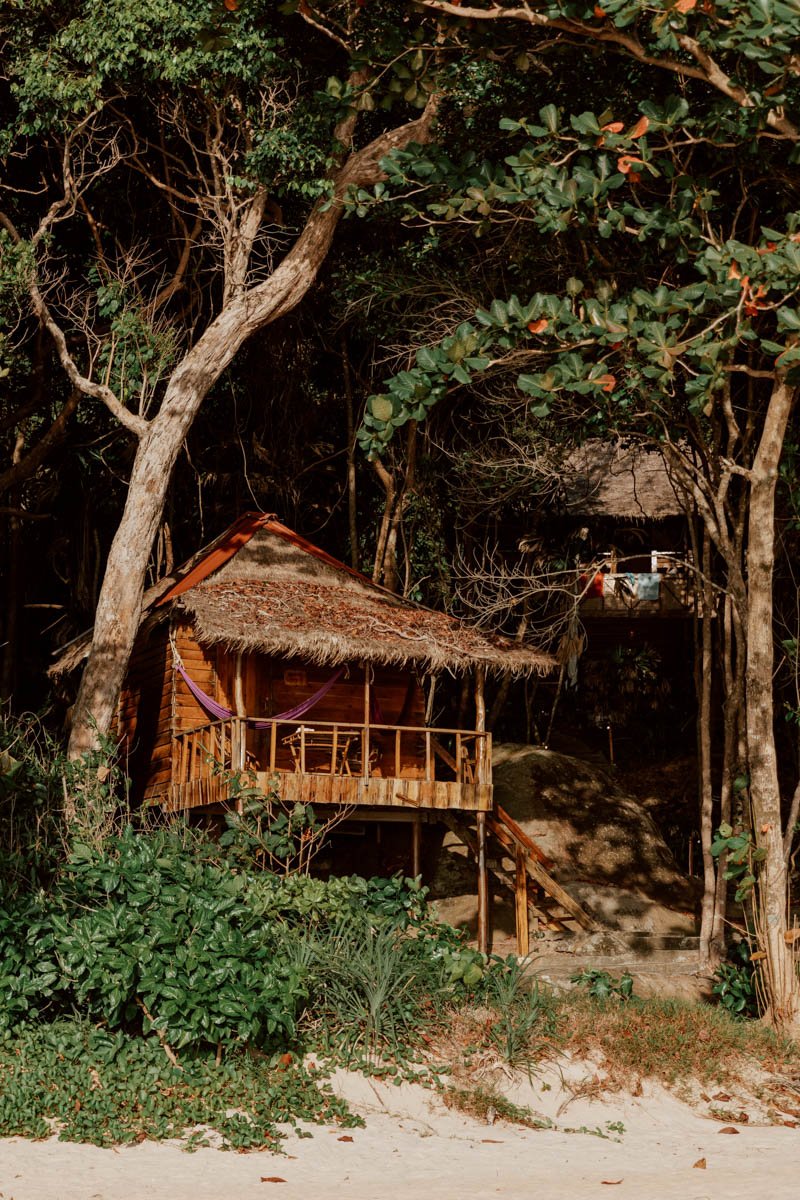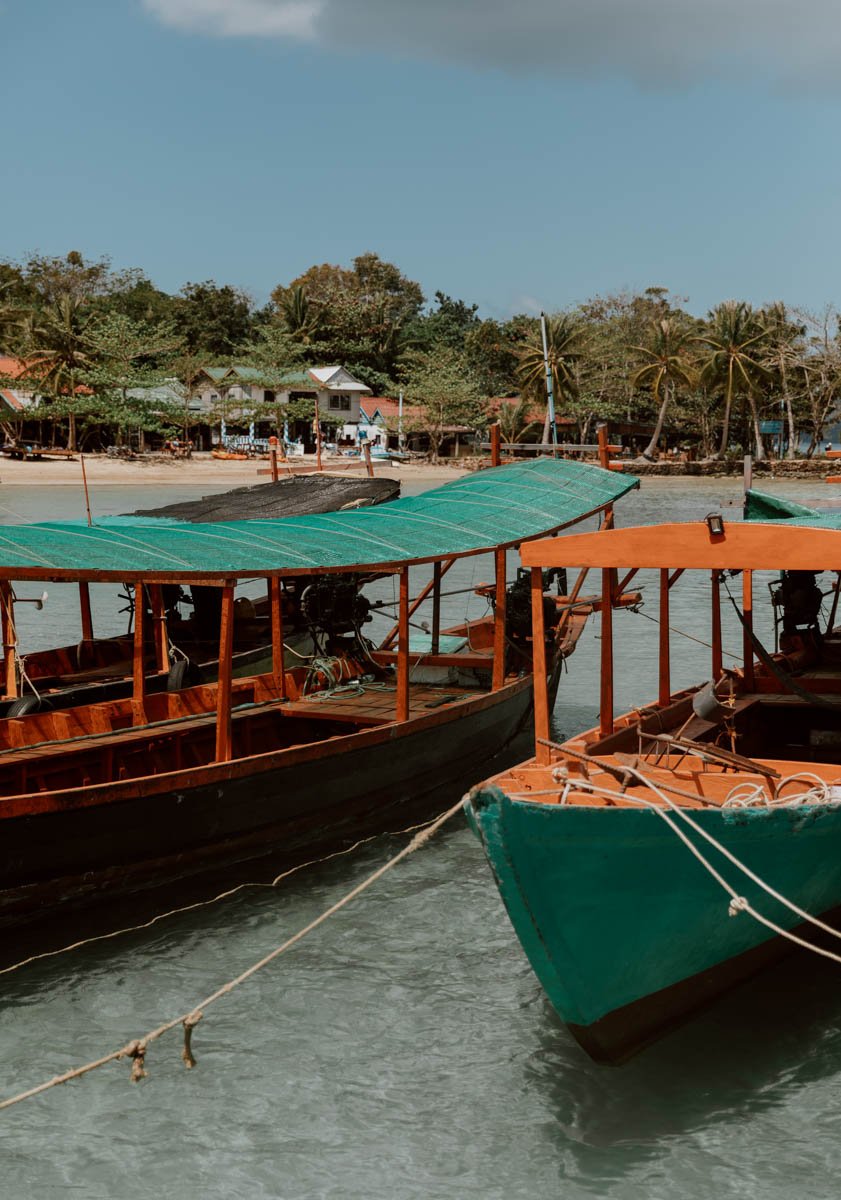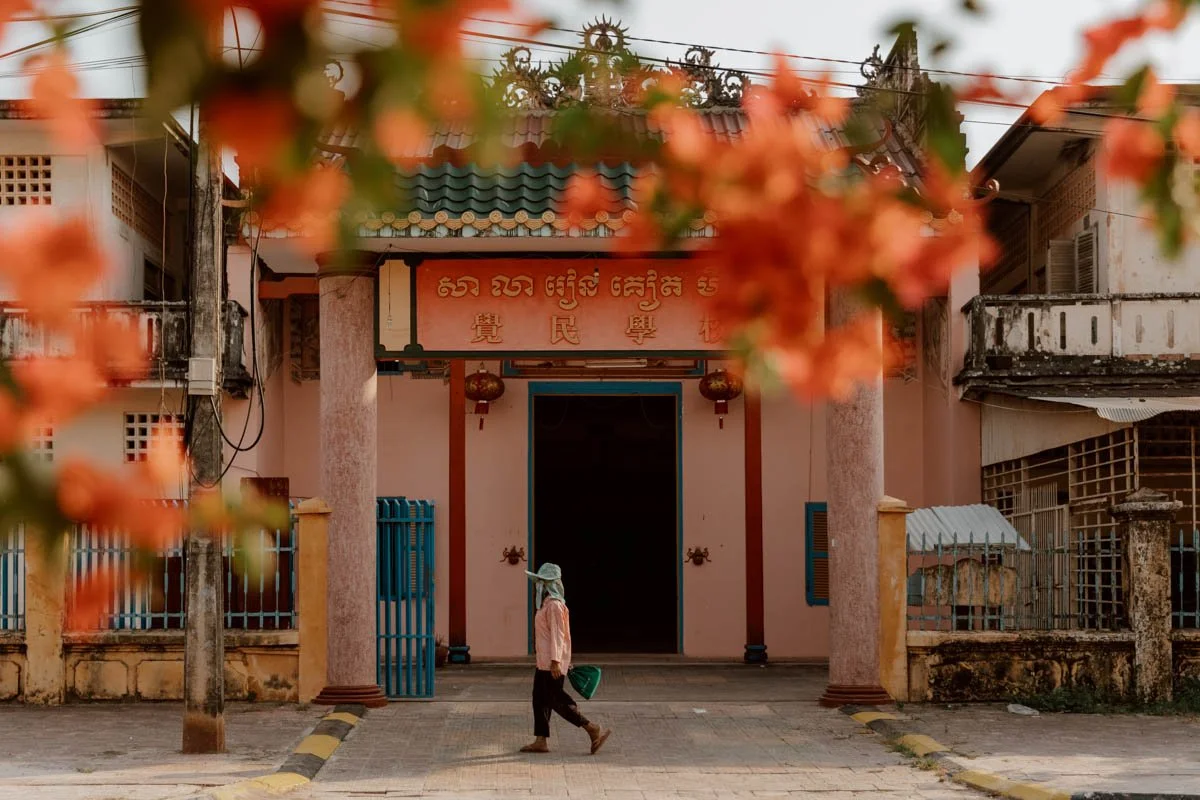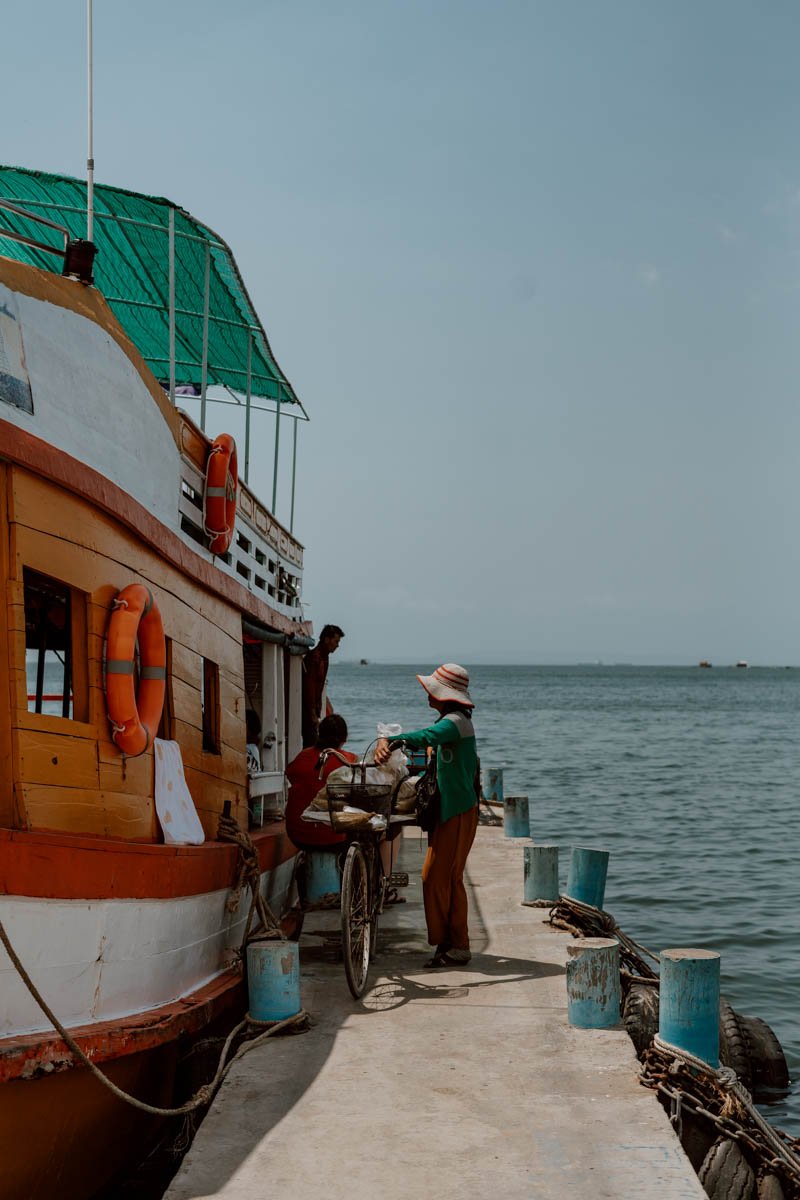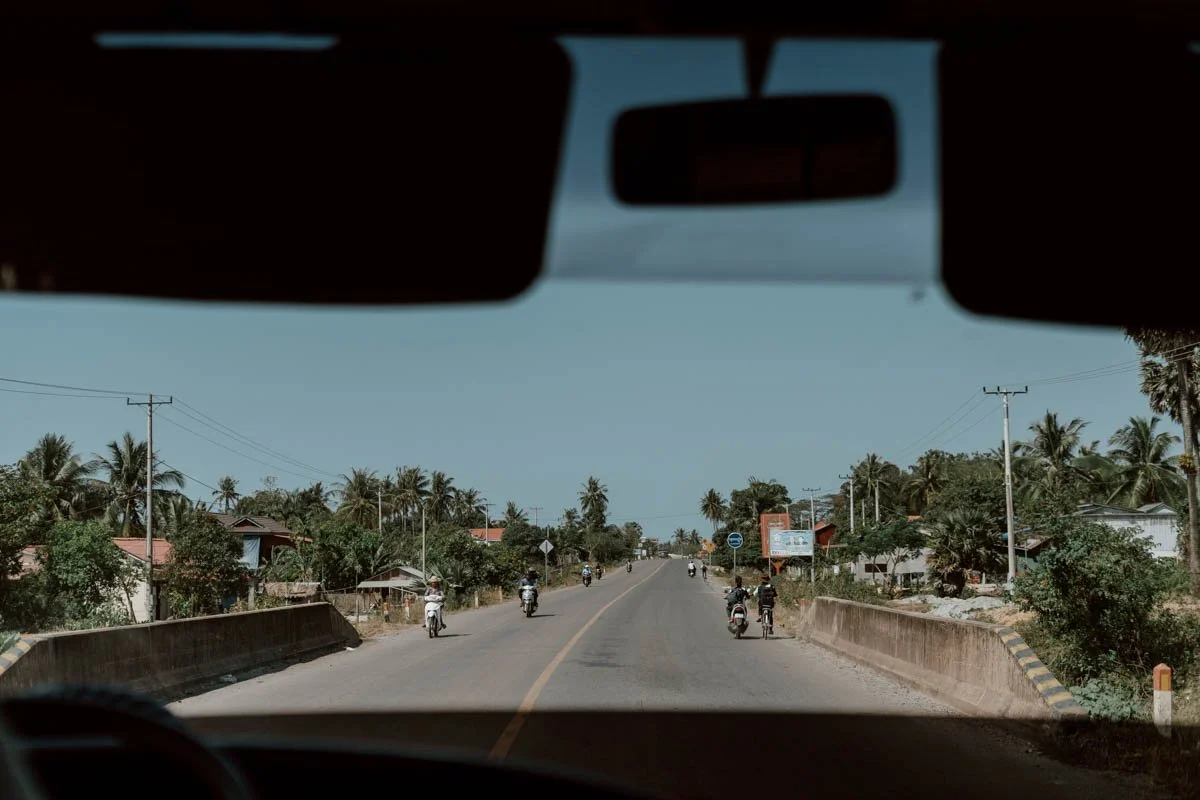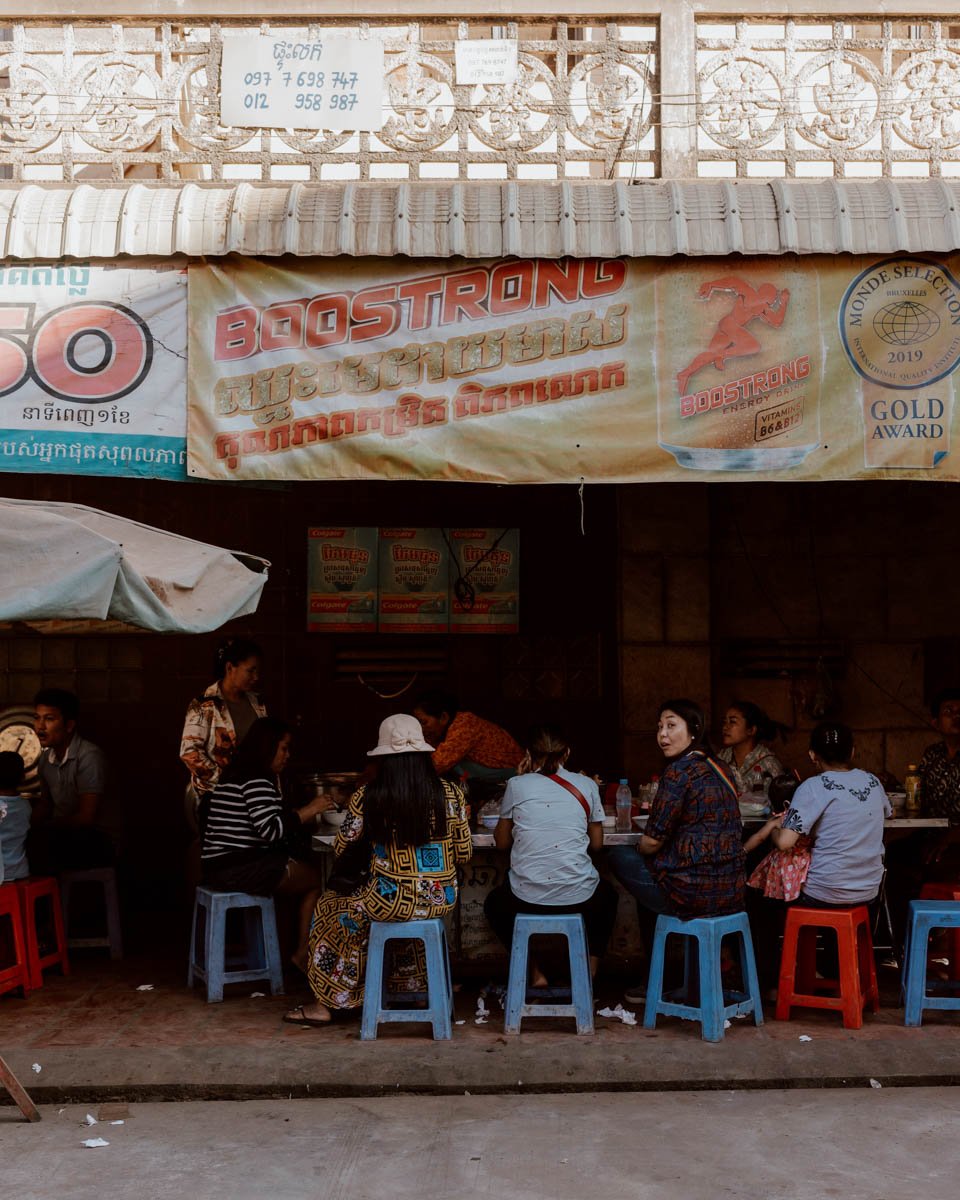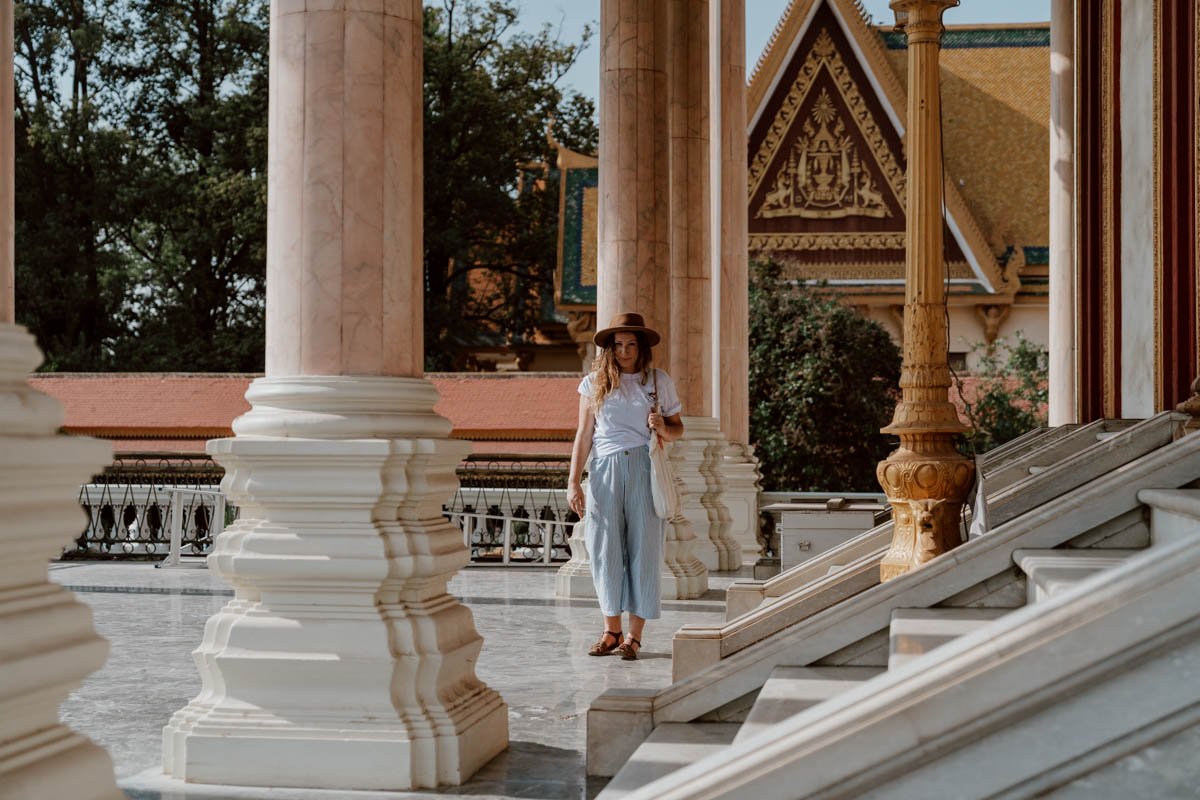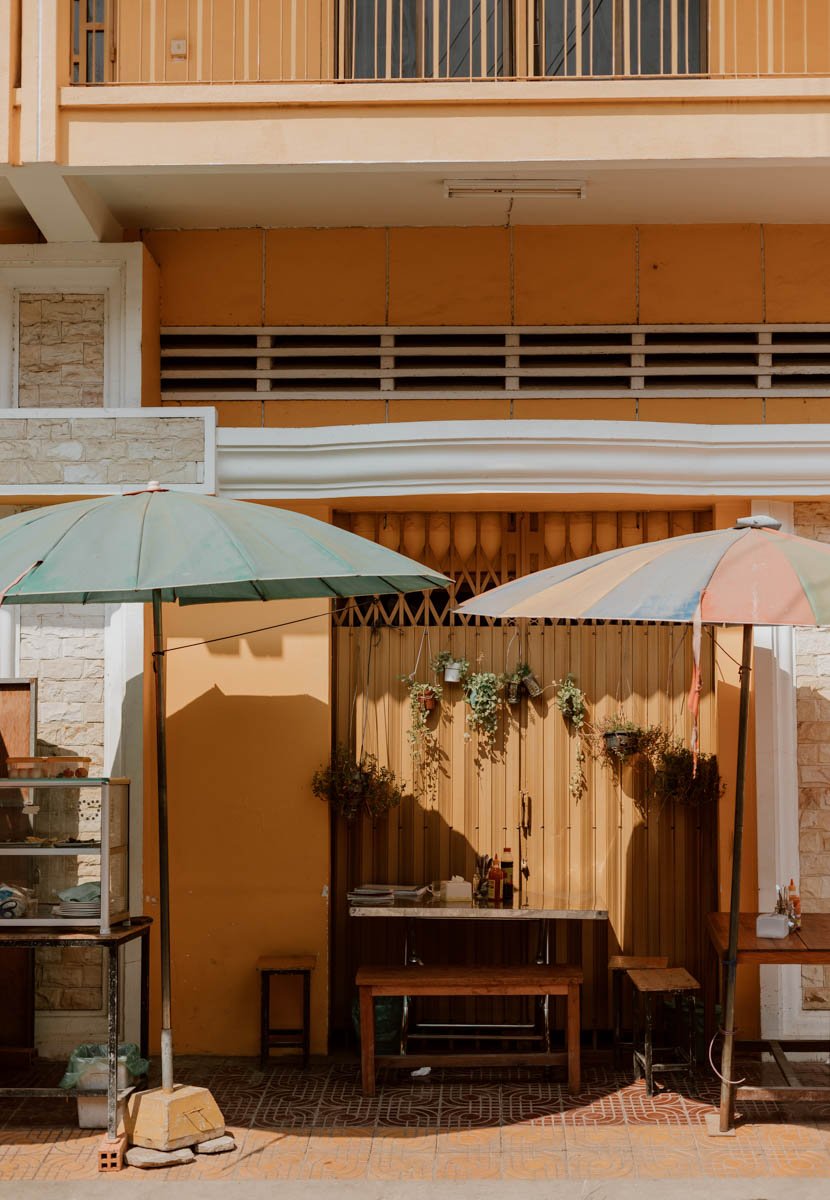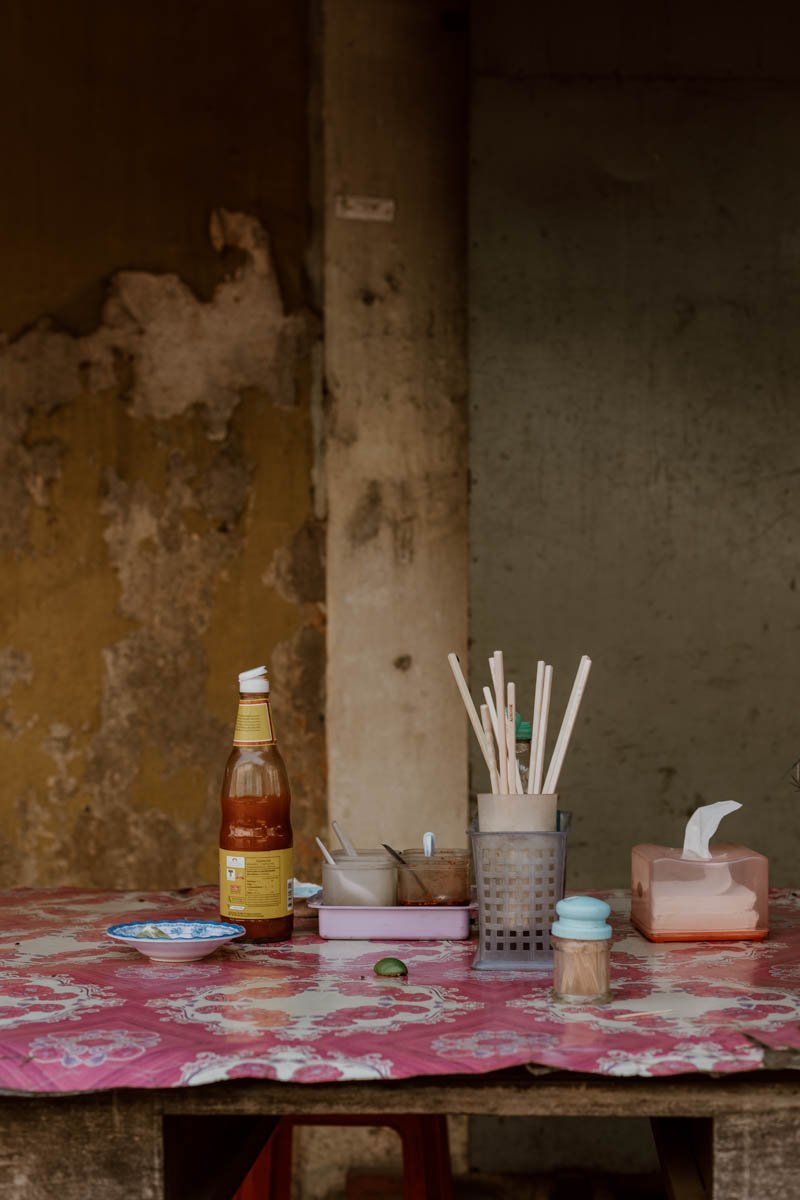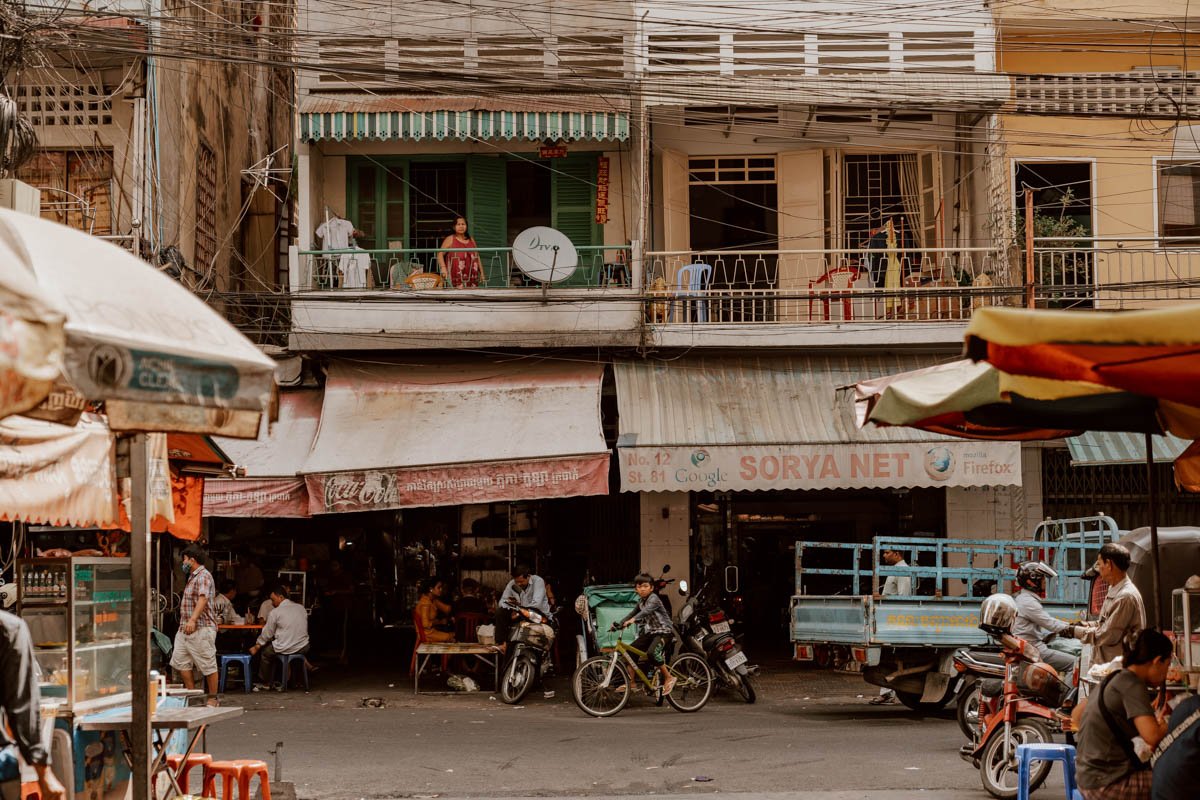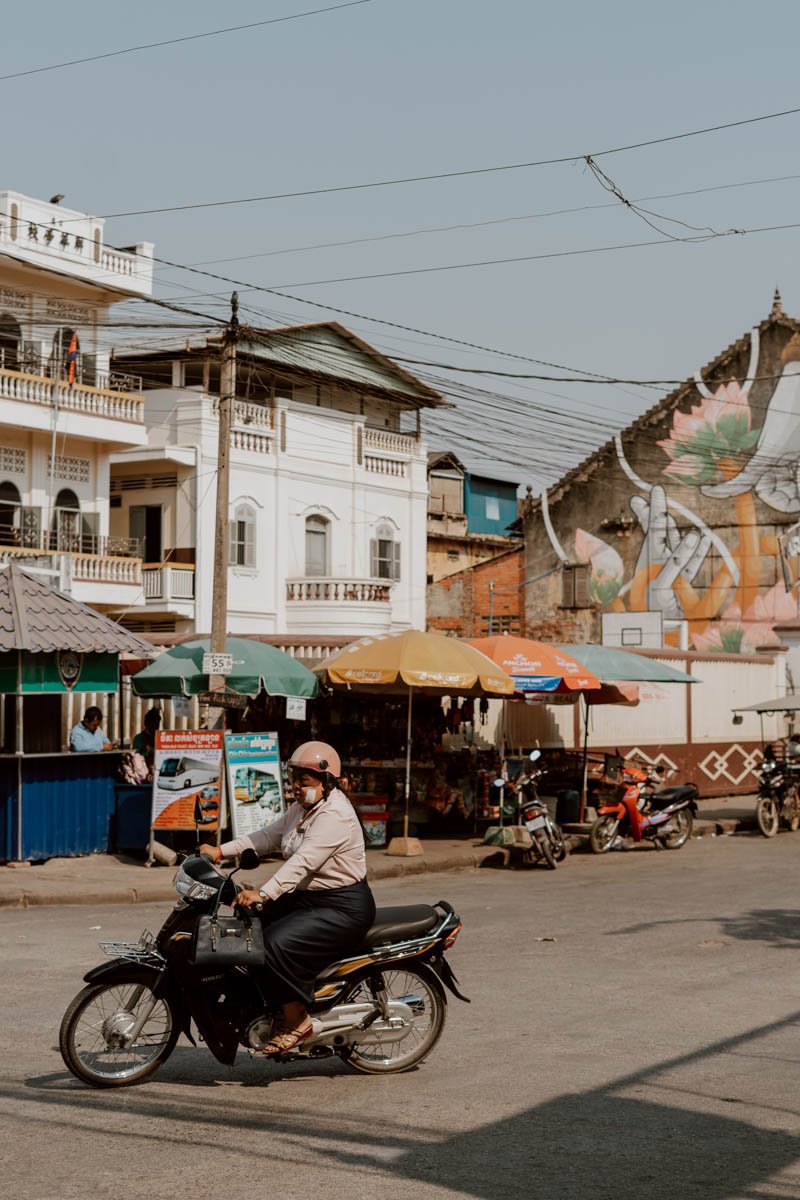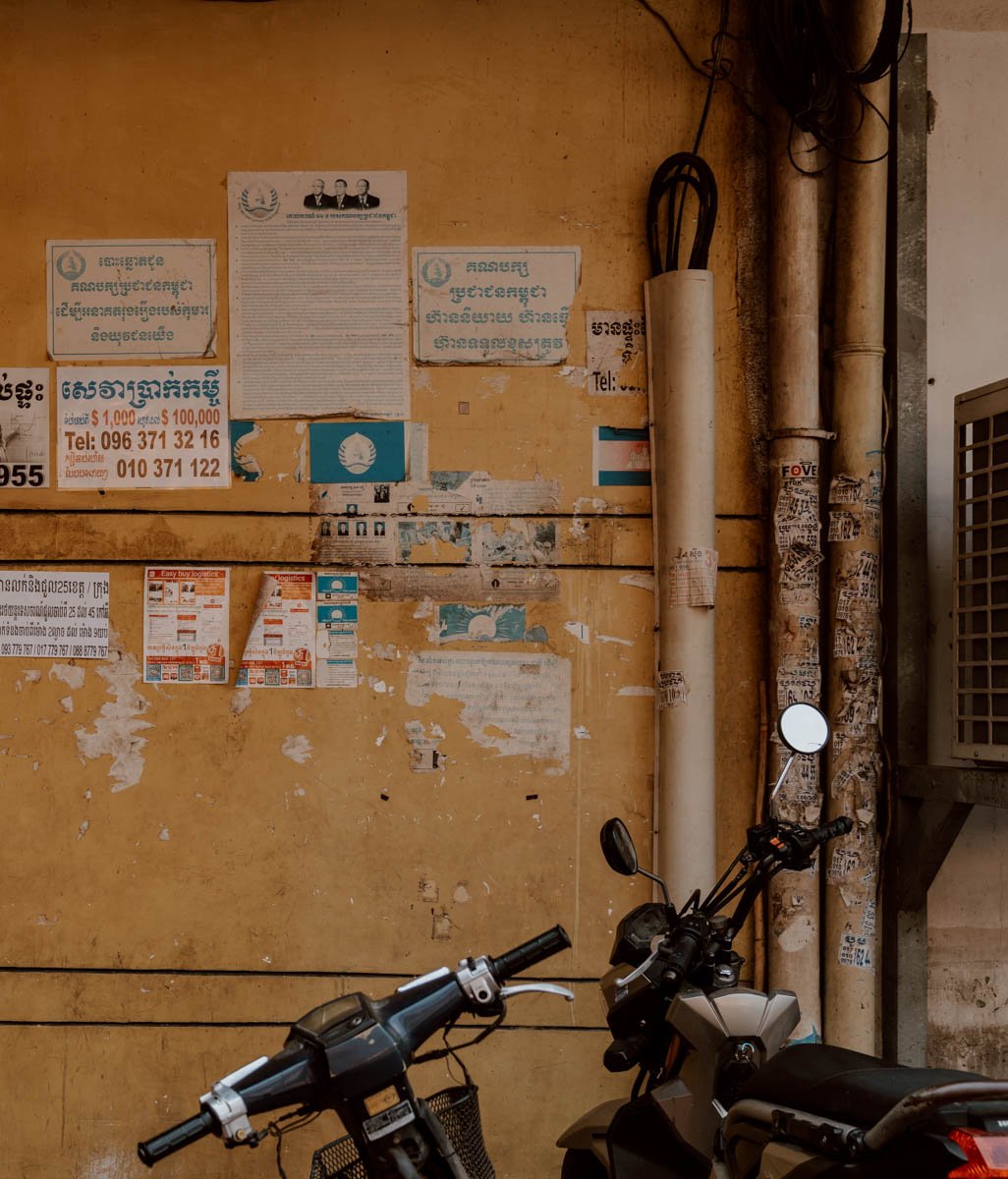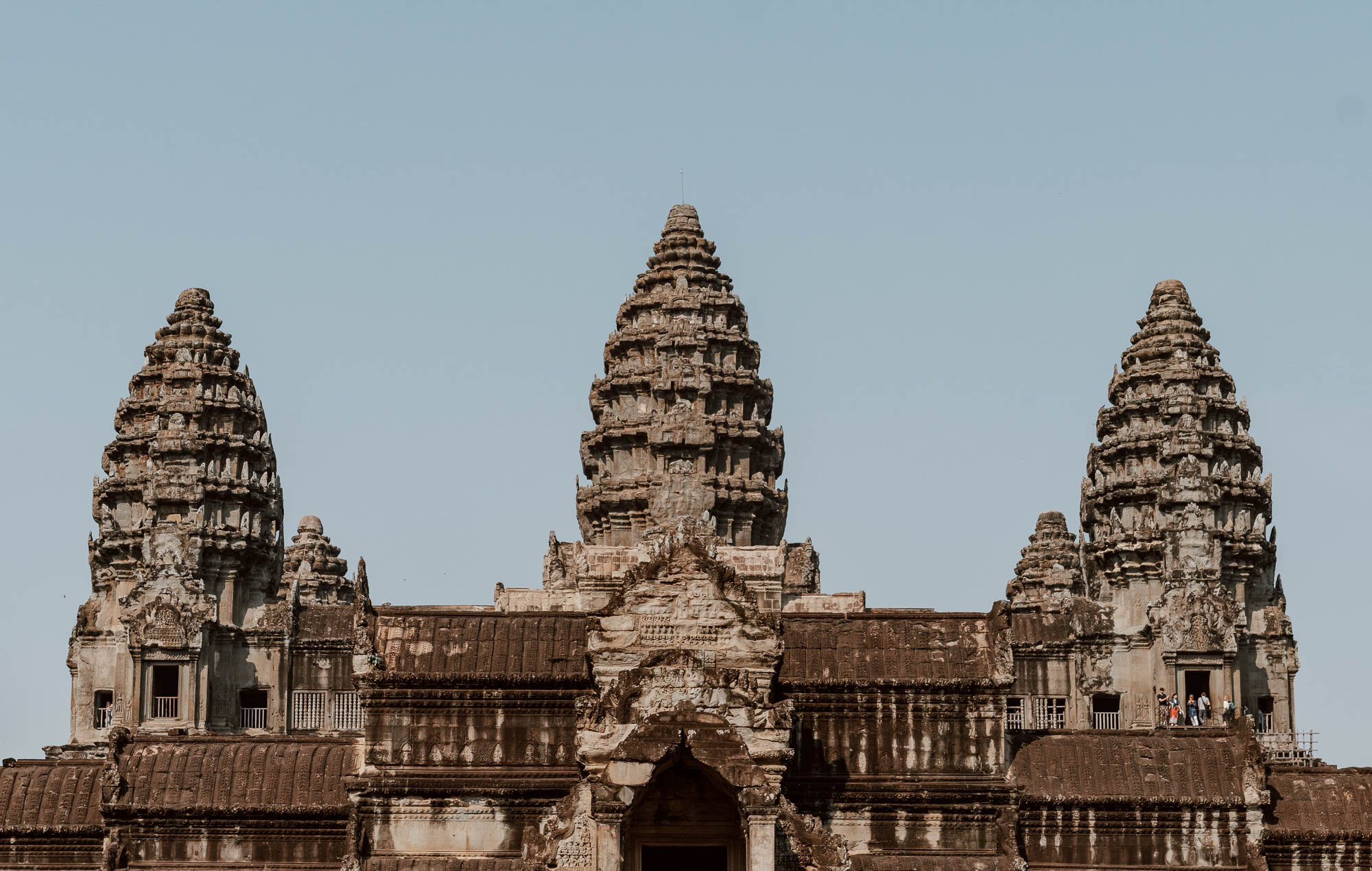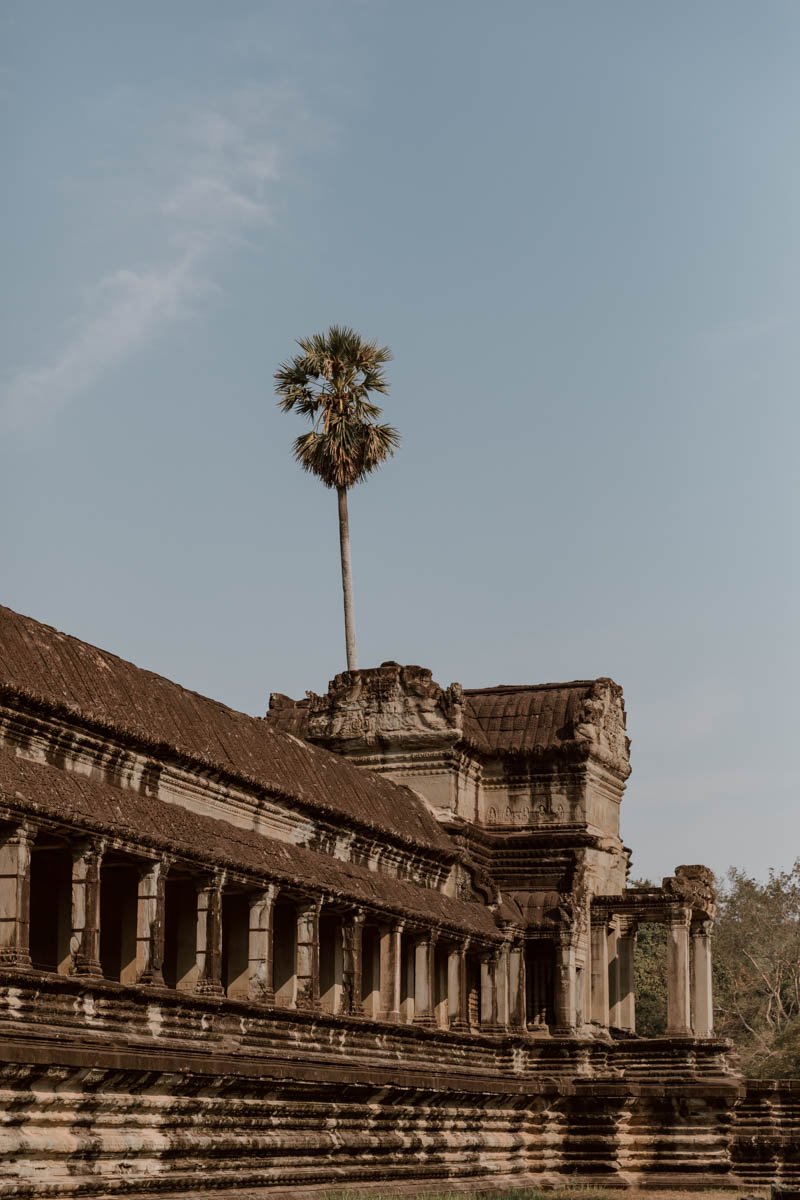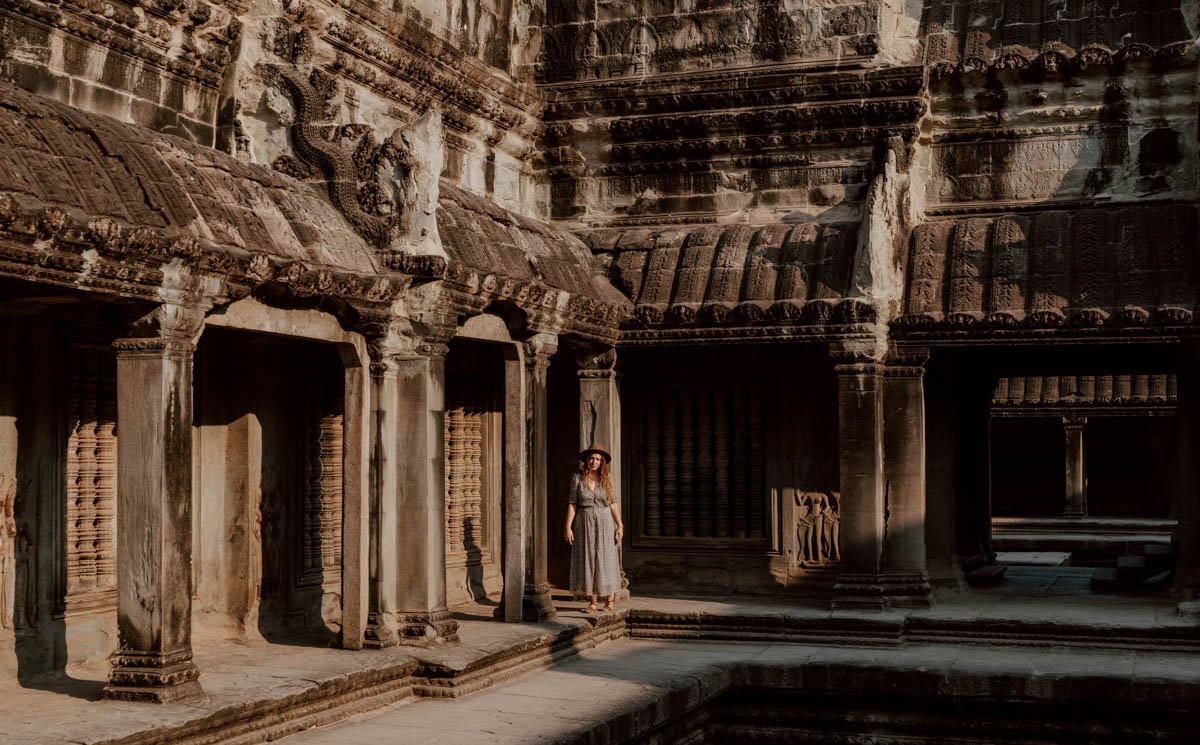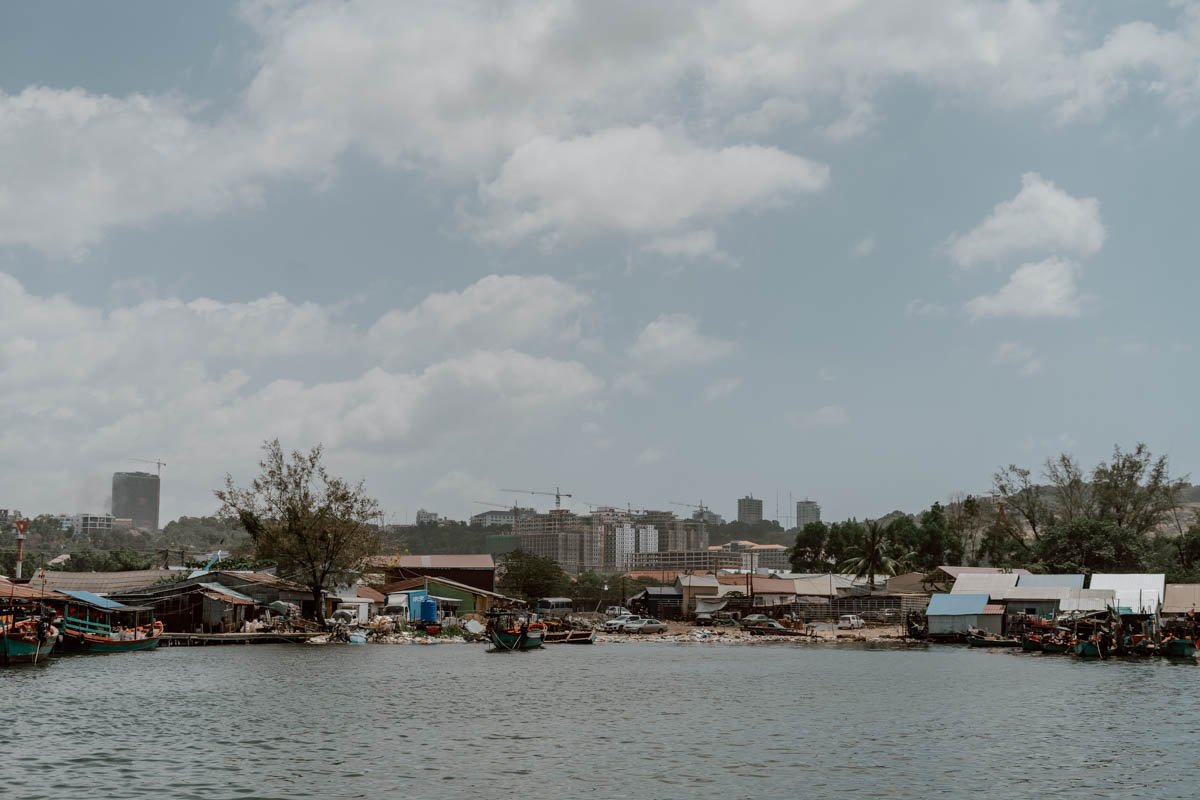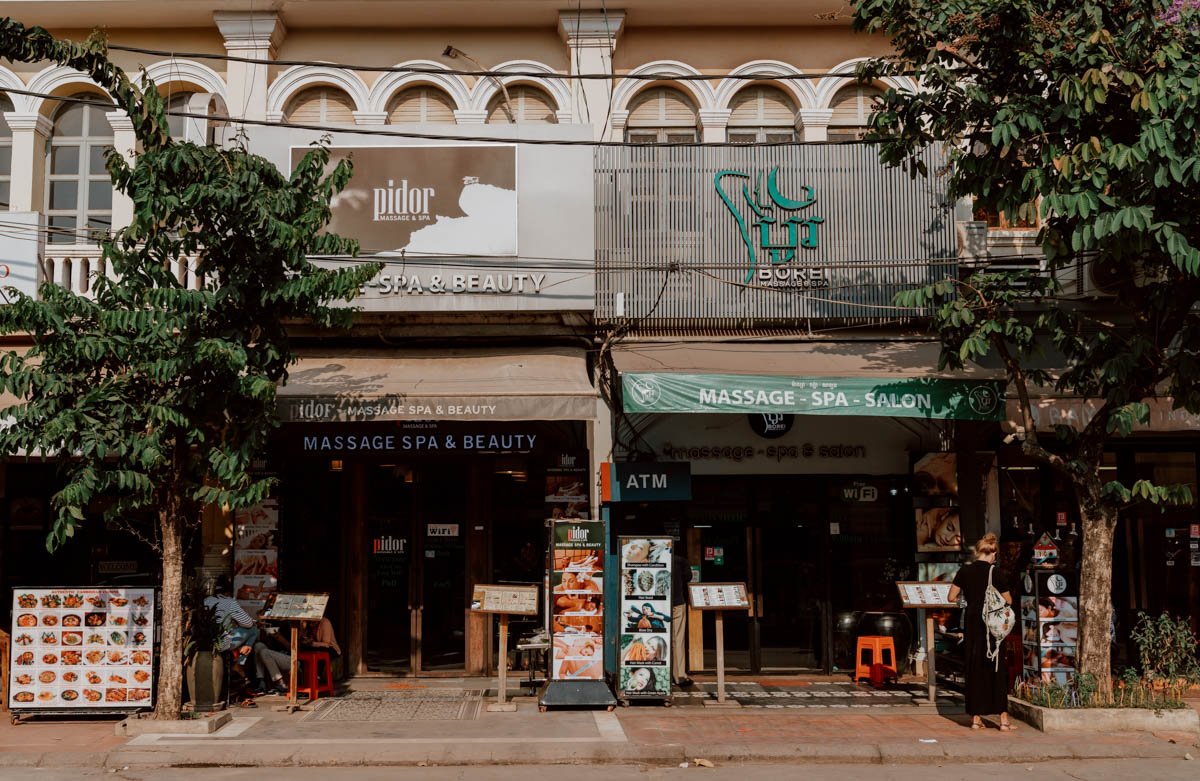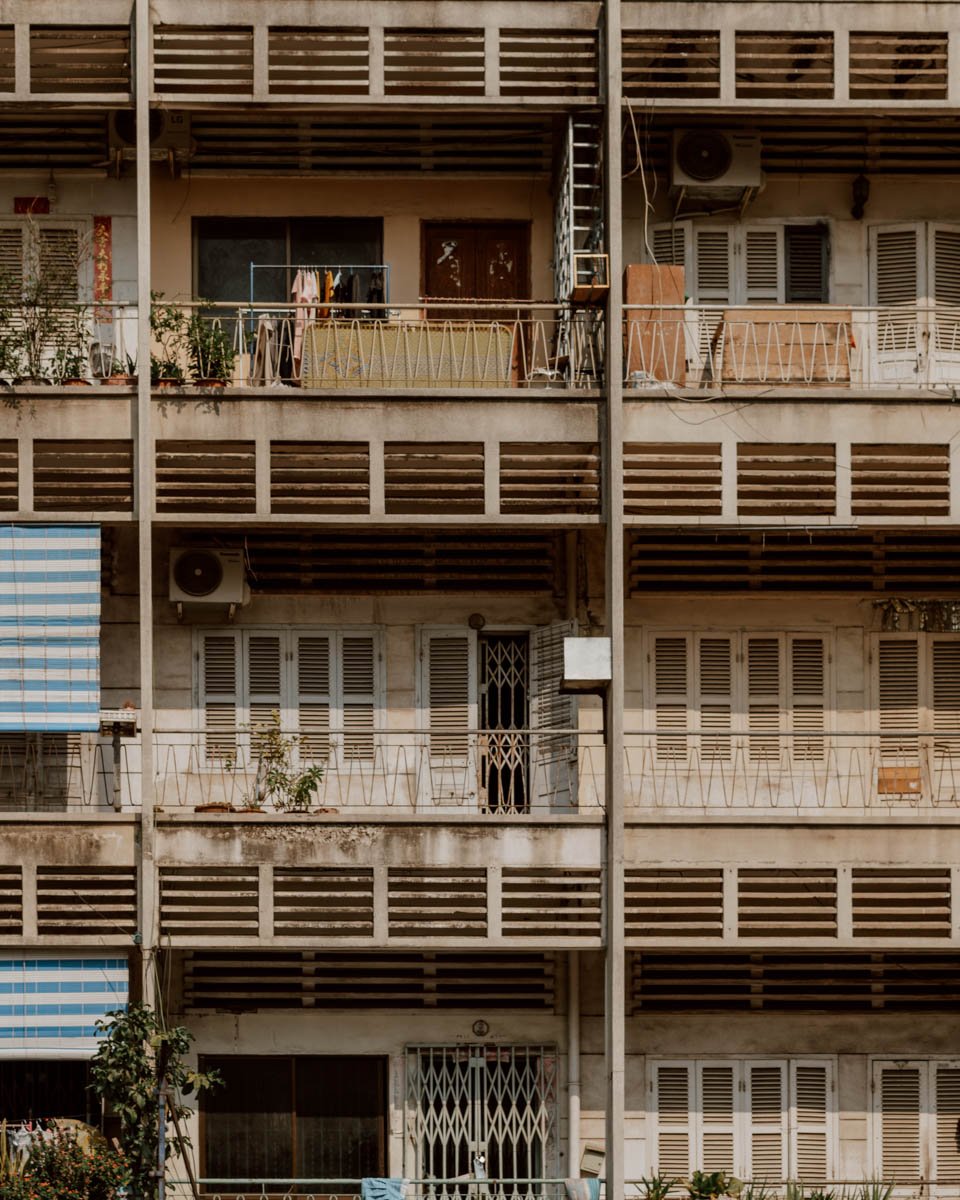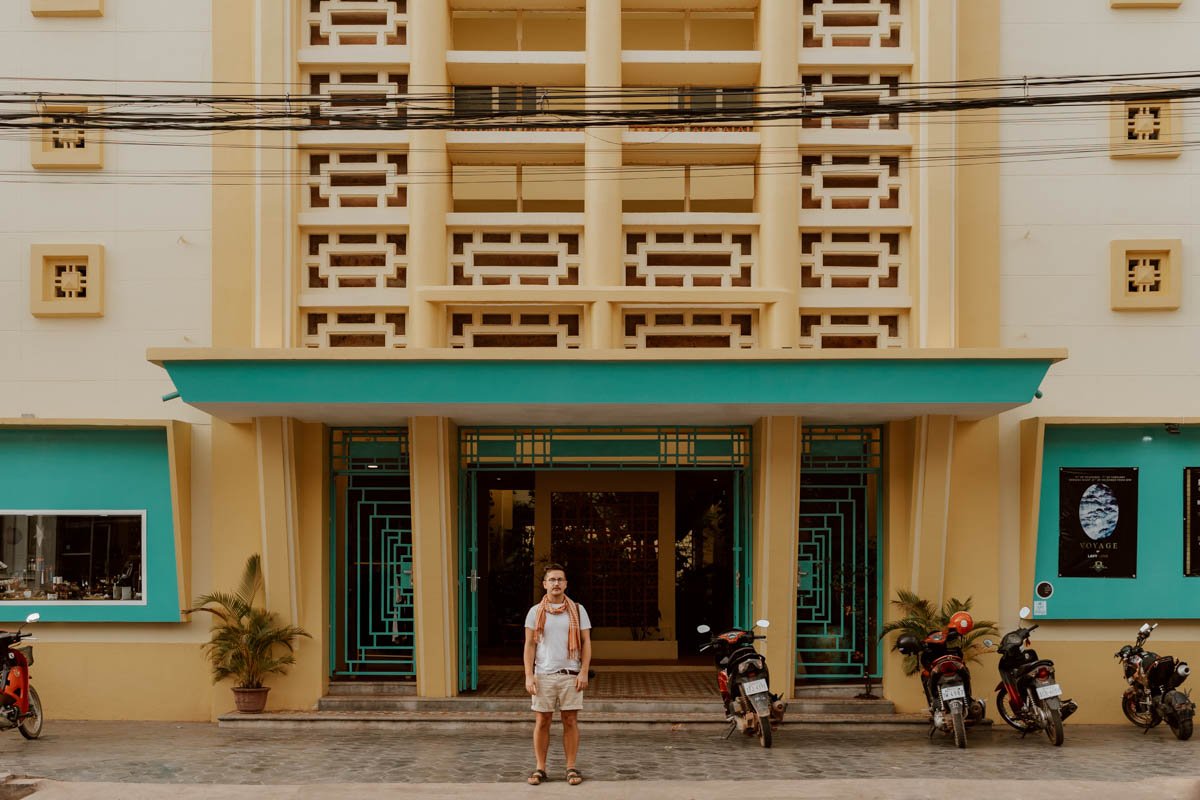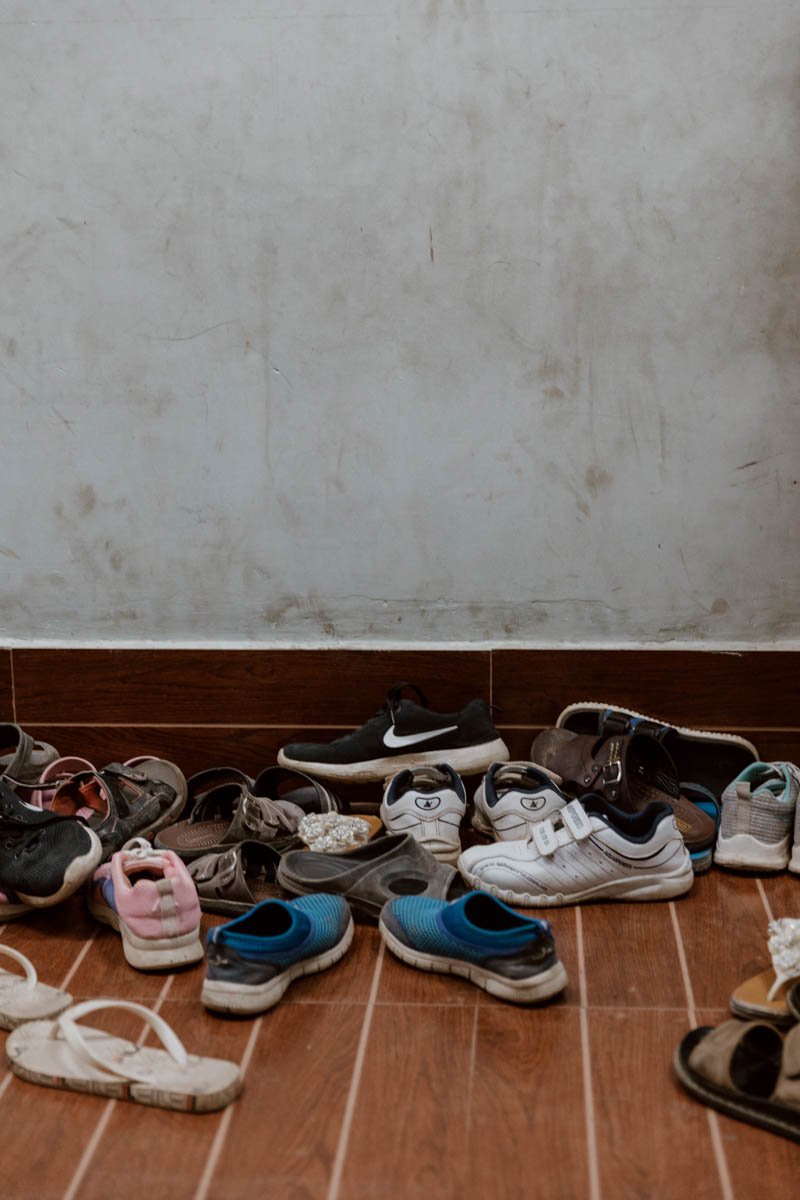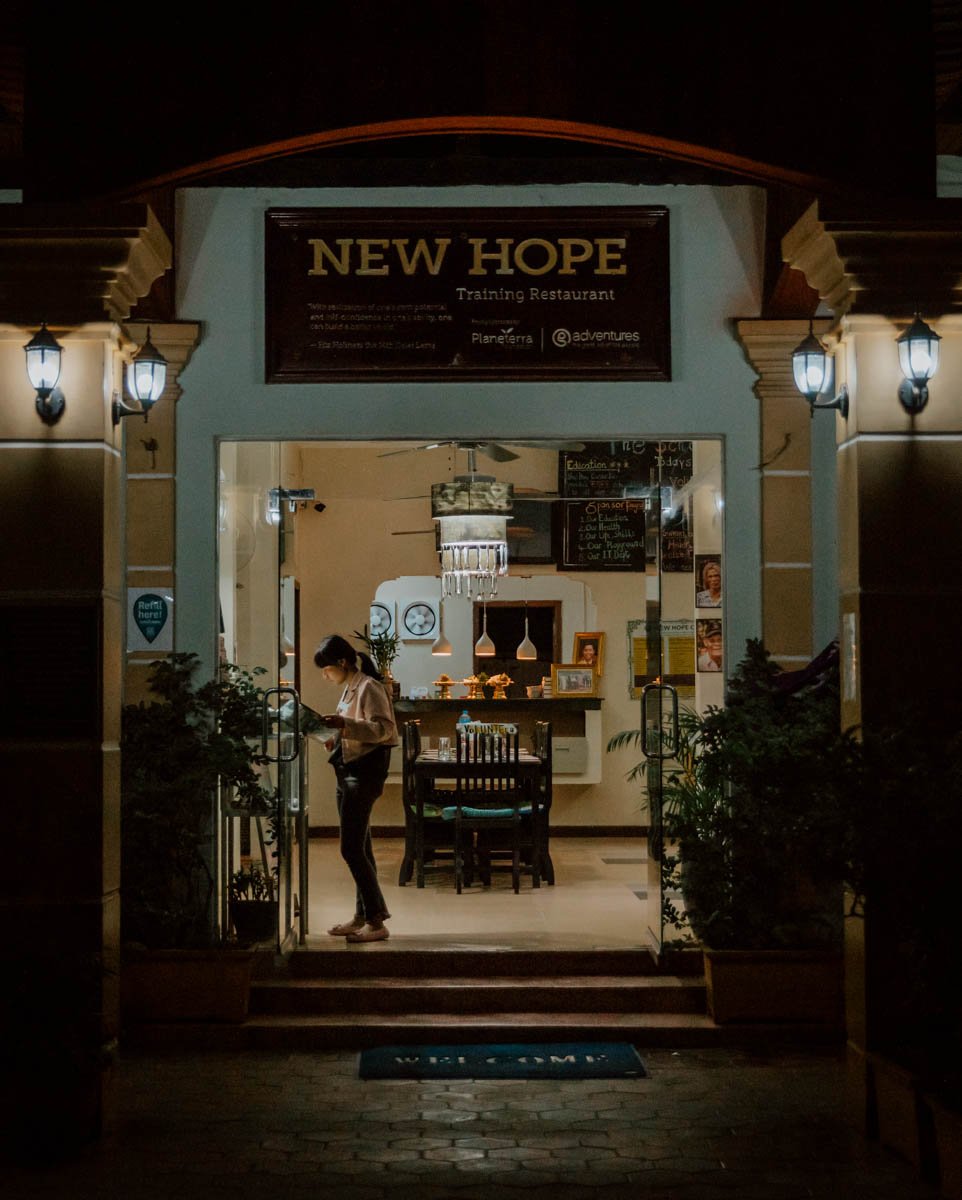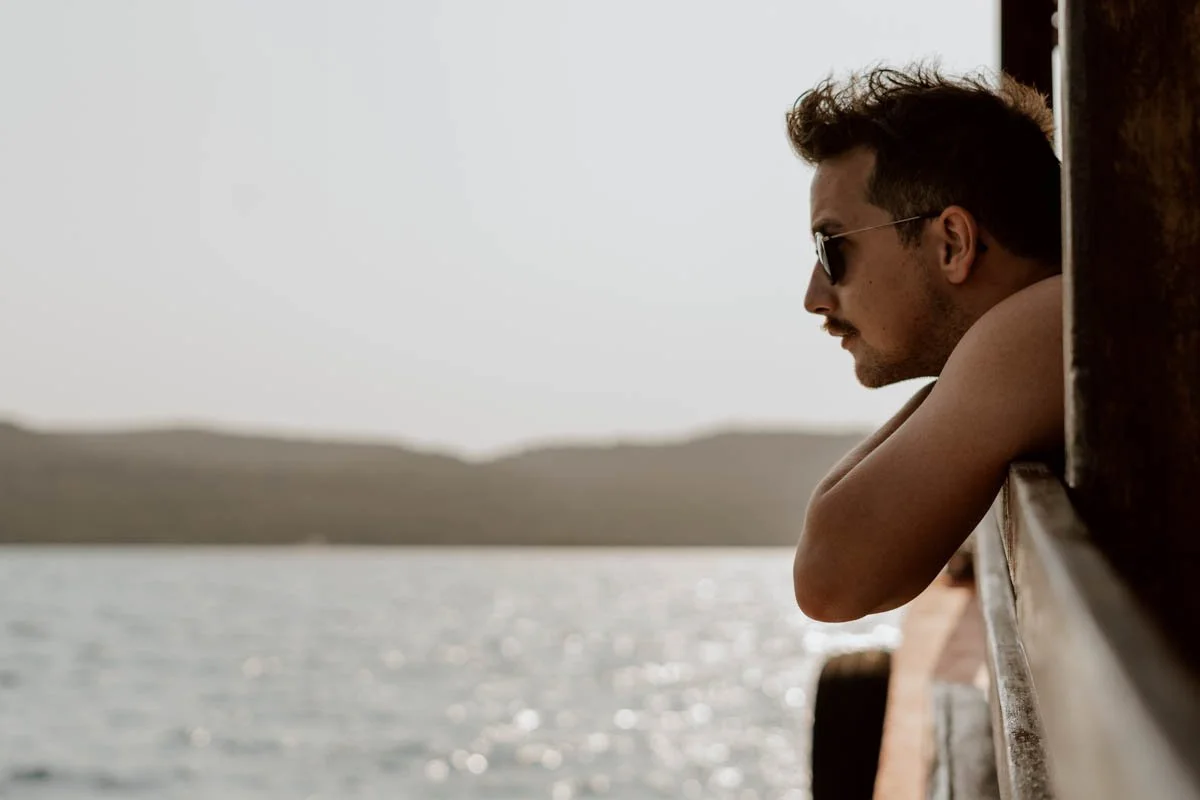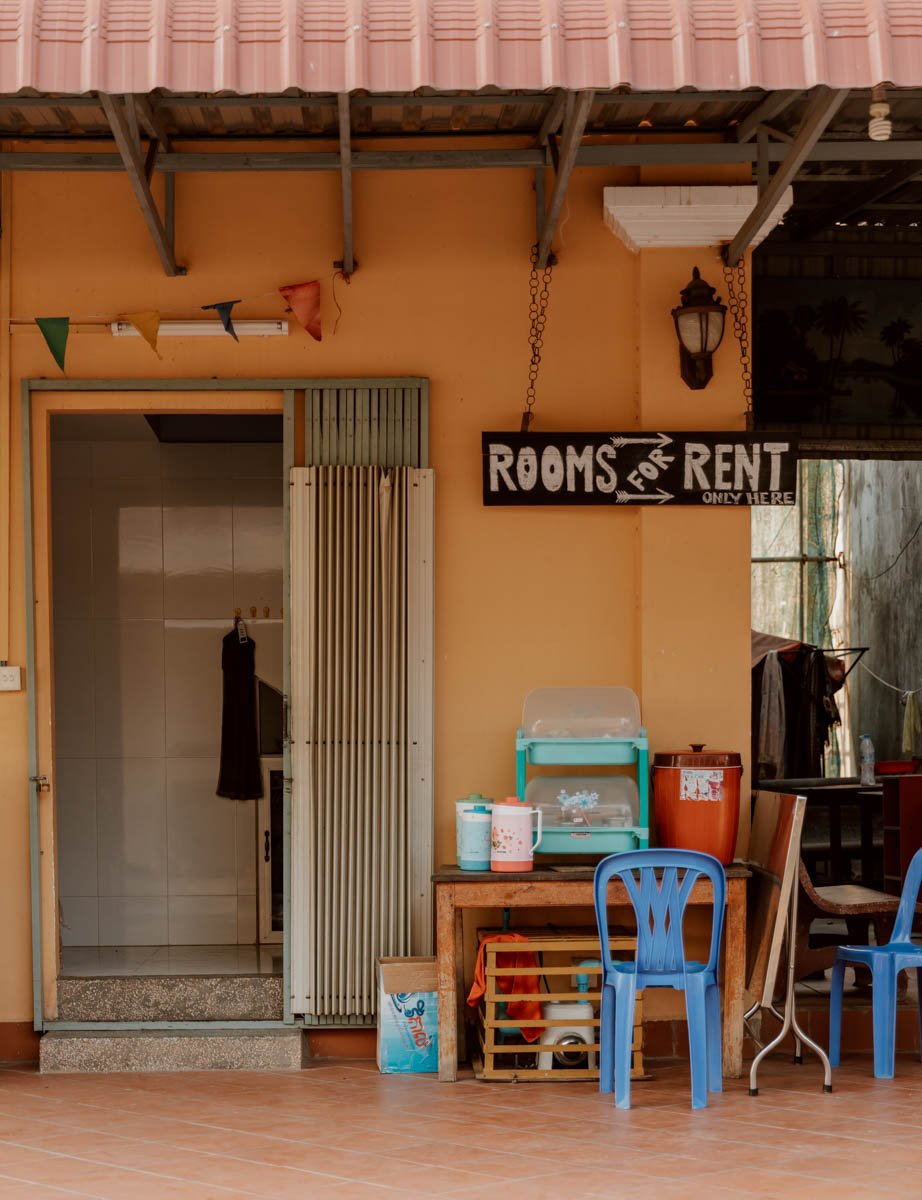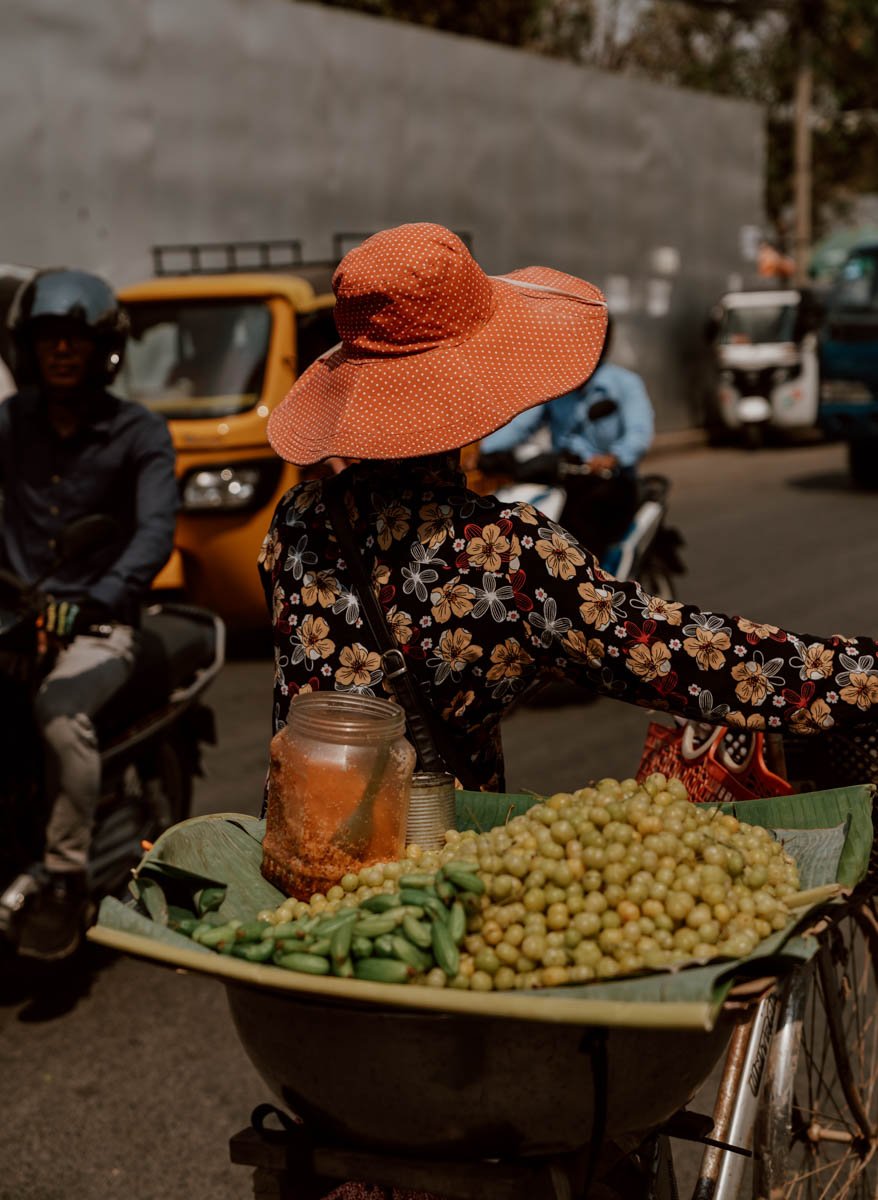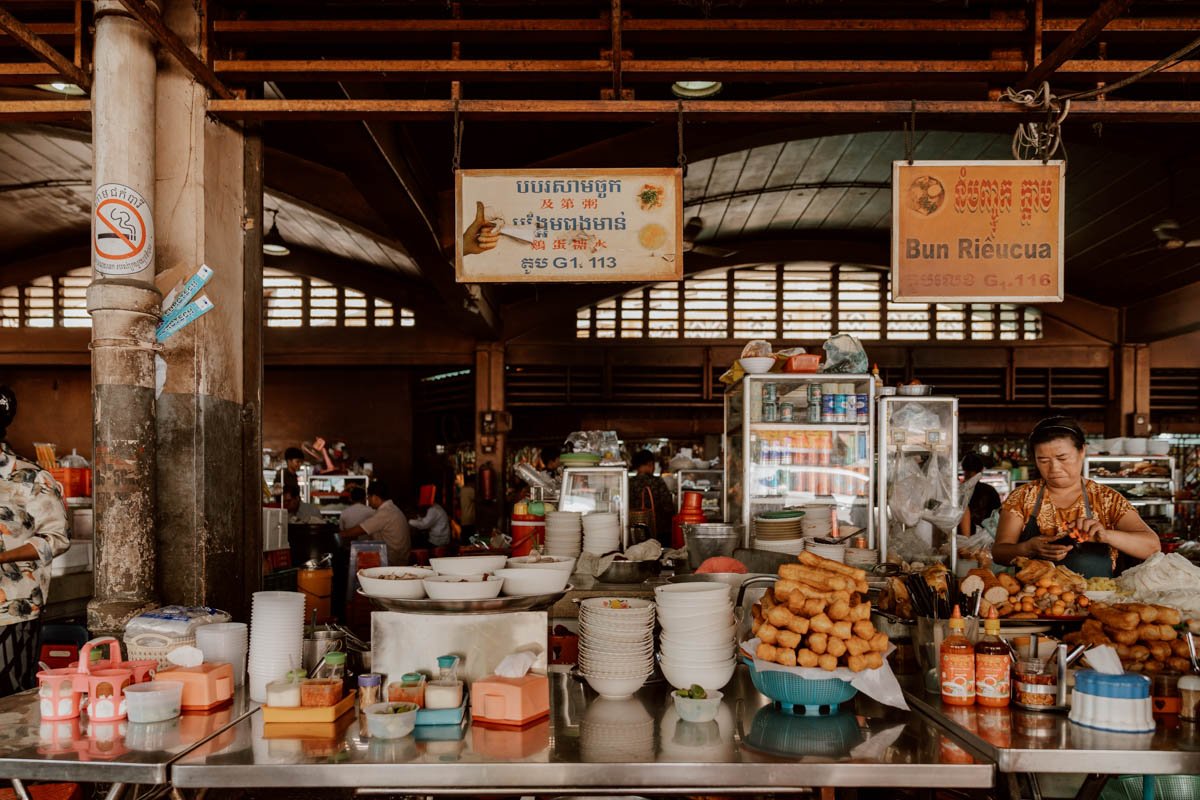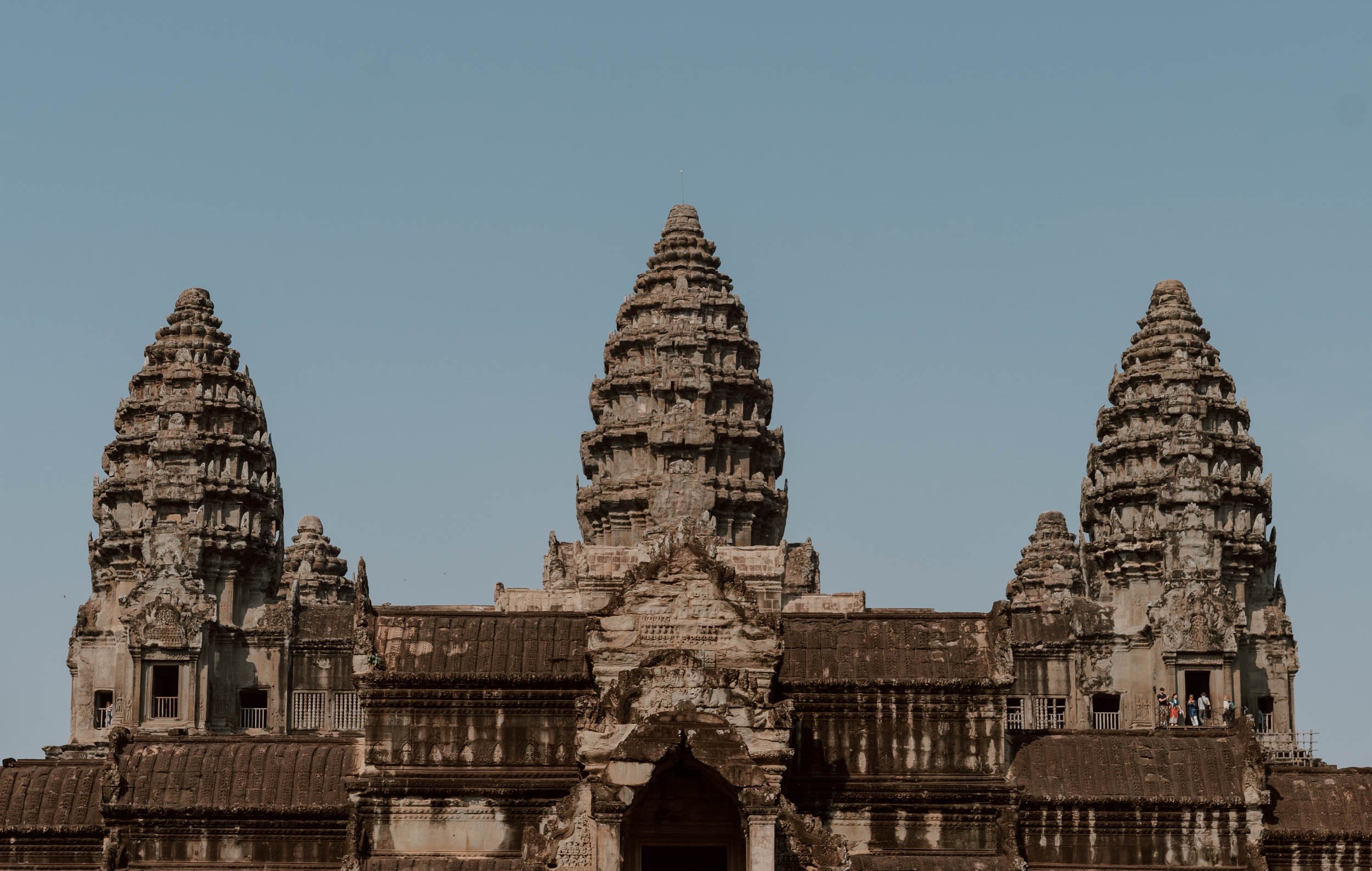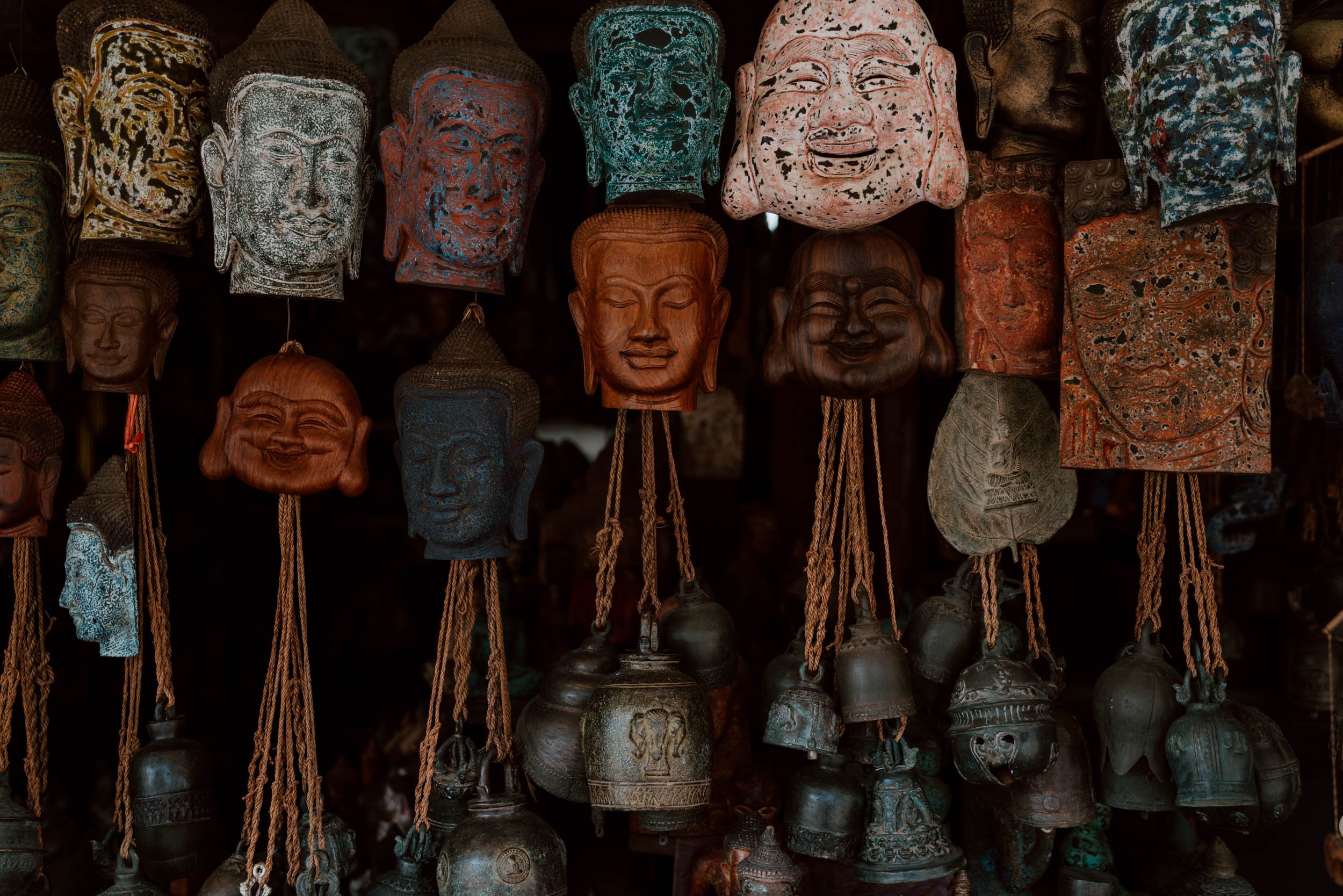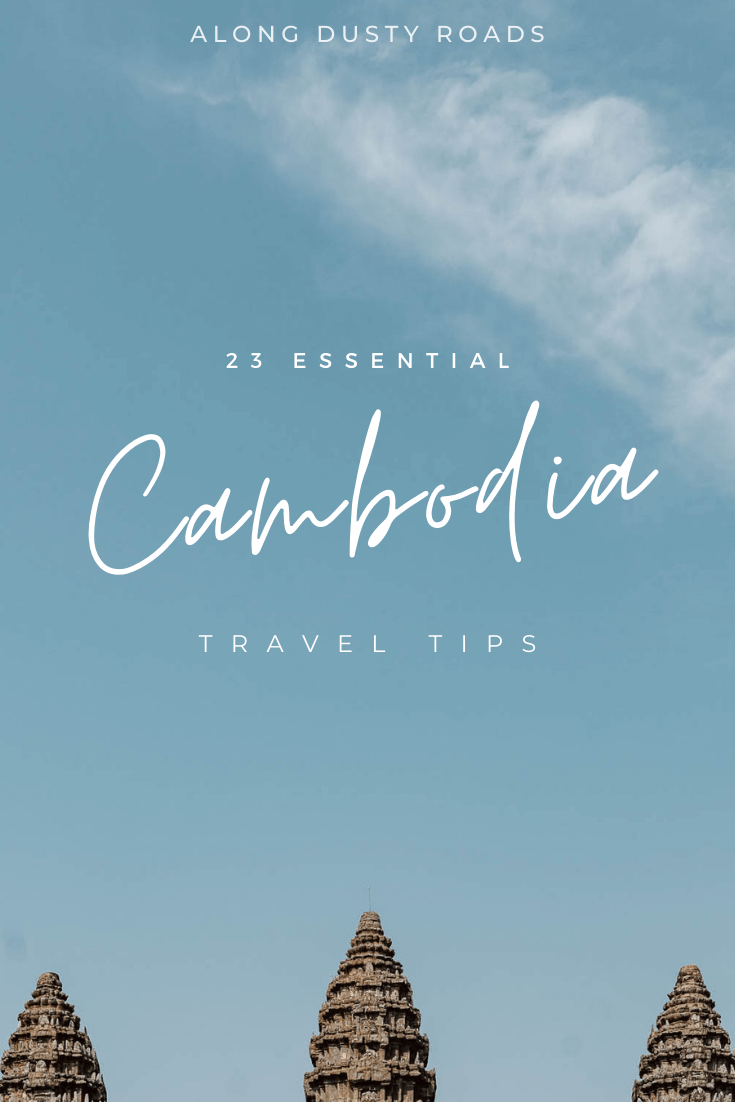From safety and sickness to budget and route-planning, our practical Cambodia travel tips will help you plan the best adventure possible.
Updated December 2023
After our three week trip in Cambodia earlier this year, we wanted to share all the little practical details, context, and useful Cambodia travel tips which we think every traveller should know before they get anywhere near Phnom Penh, Koh Rong, or Siem Reap.
Some of these will save you money, some will make your planning easier, some will cut down on stress when you arrive, and others will help you be more sustainable and respectful - but, whatever your travel style or budget, all our personal tips and insights will help you travel better in Cambodia.
Here are our essential Cambodia travel tips!
cambodia
We’ve written lots of posts on Cambodia, but in addition to this travel tips guide, don’t miss the following:
23 Essential Cambodia Travel Tips
There Are Two Currencies
One of the first things that came to our attention when we began planning our trip to Cambodia was that there are two different currencies in operation: the US dollar ($USD), and the Cambodian riel (៛KHR). The latter remains the official currency, but sometimes it feels as if full ‘dollarisation’ is in operation.
Thankfully for those who tend to confused by these things, when and where you use each one is fairly straightforward.
Essentially, the US dollar is the defacto currency for most tourists in Cambodia and was introduced to stabilise the currency and the economy in the early 90s (the country didn't have currency of any kind in the late 1970s, when the ultra-Maoist Khmer Rouge banned money and blew up the national bank). You will use dollars to pay for tours, accommodation, transport, in tourist restaurants, bars and big shops, and online bus + ferry tickets. Prices will pretty much always be quoted in dollars in those situations, and it's the currency that you will withdraw from the ATMs.
Street vendors, markets, small shops and local restaurants will have prices quoted more frequently in Khmer riel, but you can also pay in USD with no issues.
As no smaller denomination of US currency exists below the dollar in Cambodia (any US coins won't be accepted), it's common to receive Khmer riel back as change, both notes and coins. This is accepted everywhere and you can even pay in a combination of riel and USD. During our trip, the standard exchange rate across the country was $1 = 4,000 R (it still is around that), which is thankfully pretty easy to use for rough exchange calculations in your head.
Say, for example, you pay with a $5 note for a beer which costs ៛2,000 KHR / 50 cents - you might receive 4 x $1 notes plus ៛2,000 KHR in change. Or you might receive ៛14,000 KHR in change!
Top tip // Whilst we never had any problems with some of our more crumpled notes, it's best to use new USD notes. We have heard of people having notes rejected for small tears and marks. Bring in USD with you, and then simply top up at ATMs in Cambodia (more on these later). It’s always best to pay in smaller denominations rather than drop a 50 or 100.
Read Next | What Things Cost in Cambodia
You Can Get Your Travel Visa on Arrival
Cambodia provides you with two options to purchase your 30 day travel visa: you can either apply and pay online and in advance, or get it sorted when you arrive in Cambodia (whether that be by land or by air).
We chose the latter, mainly because it was $7 cheaper than doing it online. Both types of visa cost $35 USD, but you pay a $7 processing fee for the e-visa. Given the number of tourists queueing up with us at Phnom Penh airport, it was pretty clear that this is the option most other people chose!
The good news is that the whole process was super simple and efficient. You just slot yourself into the appropriate queue and hand over your passport and arrival form when asked. In Phnom Penh we didn’t have to provide them with a passport photo to get the visa, but this is common practice at both Siem Reap airport and land borders, so it's best to have at least two with you (and travelling with spare passport photos is always a good idea anyway).
You can only pay in cash.
If you do apply for the Cambodian tourist e-visa, make sure to only do it on the official website at least 5 working days before you travel.
Important to Know // Cambodian e-visas are only accepted at Phnom Penh and Siem Reap airports (they are not currently accepted in Sihanoukville) and at the three main land borders: Poipet/Aranya Prathet and Cham Yeam/Hat Lek (both Thailand) and Bavet/Moc Bai (Vietnam). Always check you're country's specific entry + visa requirements for Cambodia before you travel on official government websites.
The Islands Are Absolutely Spectacular
Competing with neighbouring Thailand, Cambodia's islands have an understated charm and absolutely should be a part of your itinerary. Situated off the southwest coast of the country, they're affordable, not completely overdeveloped, and not completely ruined (as ever though, it may only be a matter of time before tourism takes its toll).
If you're in Cambodia for two weeks to a month, you're probably only going to be able to visit one or two of the three main islands:
Koh Rong | The largest, busiest, and most famous, the vast majority of travellers on our first ferry from Sihanoukville disembarked here. It is developing a bit of a reputation for its parties and crowds, but lots of people still love it. Outside of the main beach (Koh Touch) it does still offer up more secluded island experiences!
Koh Rong Samloem* | Koh Rong's little sister offers up a slower, less busy alternative. We picked a week there to start off our time in Cambodia as we were craving a relaxed, romantic beach holiday for a few days, and we found that in buckets on the white sand of Saracen Bay. It's still got a great traveller vibe to it alongside several affordable small resorts which cater more to couples happy to not travel on a shoestring for a few days. Both M'Pai Bay and Sunset Beach are little hidden-away chilled out backpacker gems.
Koh Ta Kiev | Still relatively under the radar and rustic, but there are rumours of a bridge being built between it and the mainland...
If you’re planning on a trip to the islands (and you definitely should be), then check out our Koh Rong Samloem travel guide or 9 Things To Know Before Visiting Koh Rong Islands.
*Koh Rong Samloem is undergoing quite significant development within Saracen Bay, therefore many travellers are choosing to base themselves elsewhere on the island for a more relaxed experience.
You Cannot Escape ATM Fees
We have this thing with withdrawal fees when we're travelling.
We absolutely hate paying for them unless we absolutely have to, and it's why we've switched banks a few times, never shut up about the Starling Card and Monzo, and make it our mission in every country to find out where travellers can withdraw money without being charged by the bank machine! Over the years, that attitude has saved us a bundle.
Unfortunately, Cambodia is a bit of a bugger.
From our personal experience, there doesn't appear to be a single bank here that allows free ATM withdrawals for non-local cards. Many wouldn't work with our cards, and those that did would charged a flat $5 USD fee or a chunky percentage of the transaction. The below summarises our experiences of using our Mastercard banks cards in Cambodia:
Acleda Bank | $5 USD fee per transaction, withdrawals up to $1000 USD. Their ATMs never actually worked for us.
CAB (Cambodia Asia Bank) | $5 USD for withdrawals up to $250 USD, 5% transaction fee for withdrawals over that amount.
Vattanac Bank | $5 USD fee per transaction, with a max transaction of $300 USD - this bank's ATMs always worked for us.
Maybank* | $5 USD fee with a max transaction of $500 USD. Their ATMs never worked for us, but it's possible we were asking for too much money per withdrawal relative to what our own bank allowed.
*We have heard a rumour that this bank no longer charges for withdrawals via US/European Visa cards - if you can confirm, we’d love to hear from you in the comments.
ABA | Seemed to be the most common ATM in Cambodia, with a $5 USD flat fee irrespective of amount withdrawn. It worked for us.
Note that withdrawing less than the maximum amount stated is sometimes necessary - for example our UK bank permits a maximum of £300 per day when abroad, so it would be impossible to take out $500!
So, our advice is to bring in a sensible amount of US dollars from home ($200 or so + $100 for emergency cash) and then stock up by withdrawing larger amount from ATMs as and when you find one which works for your card - just remember to only withdraw these amounts in a location close to your accommodation and where it's sensible to do so.
Read Next // Find out more money-saving tips in How To Avoid ATM Charges & Bank Fees When You Travel and How To Manage Your Travel Money Better.
It's Perfect For Two or Three Week Adventures
Given south east Asia's popularity as a multi-month backpacking route, a large number of you reading this may be travelling in Cambodia, Vietnam, Laos, and Thailand for three or more months.
However, for those of you who are looking at Cambodia as a standalone trip, the great news is that the country's size and backpacking routes are well set-up for trips lasting two to three weeks at a relatively manageable pace. Those with more time on their hands will be able to go at a gentler speed and a little more off-the-beaten-track, but two weeks offers up the chance to visit most of the country's highlights.
As G Adventures Wanderers, we joined their their 14 day Ultimate Cambodia Adventure in 2020, and we can highly recommend it. As a small group tour with private transport it allows you to experience more than is possible in two weeks of travelling Cambodia independently (see the next thing to know!), and also includes an English-speaking guide, all accommodation, plus various activities - view the itinerary or find out more details here.
Read Next // Check out our Cambodia Itinerary Inspiration post to help plan your own two or three week trip.
When it comes to transport, departures and arrivals are on 'Cambodia time'...
During our first week in Cambodia, we travelled independently and took a pre-booked tuk-tuk, two medium-distance buses, and four boats between the islands and the mainland.
Not a single one left on time.
Not a single one arrived on time.
Not a single one took the amount of time we were advised of when booking.
Turns out, quantifying 'on time' is a very un-Cambodian pursuit, and we're not just talking 5 or 10 minutes difference here - and many other travellers echoed this.
So, we have a few essential suggestions for you (probably some of the most useful Cambodia travel tips in this post!).
1. Take everything with a pinch of salt. Of course, you'll need to arrive to the bus station/private terminal/jetty at the advertised time, but go expecting that you'll be waiting around for a while. Our ferry back from Koh Rong Samloem left 90 minutes late - and it was the first boat of the bloody day (but supposedly it always leaves 90 minutes late....surely then just bloody change the time you advertise so people don't have to wait around?!)
2. Never allow for any close connection times, or you run the risk of missing your onward journey. We had to leg it a kilometre from the bus drop off point to the Sihanoukville ferry terminal, with all our bags, in sand, and without an appropriate bra (in Emily's case). The only reason we made it was because the ferry itself, in true Cambodia style, was an hour late aswell!
3. Advertised 'express' bus times are often a lie. We bought a ticket advertising a four hour journey time between Phnom Penh and Sihanoukville - turns out this is physically impossible, even for a taxi. And there are often lots of unscheduled stops along the way. From the reviews we read afterwards, it seems like this was a daily occurence. You'll get a far more accurate picture of the likely journey time by sticking the arrival / destination into Google Maps (then adding an hour) than believing what the company says.
In short, during your Cambodia trip, delays with transport are inevitable.
...But You Should Book Your Transport in Advance
That being said, given the popularity of several routes on Cambodia's backpacker trail, it's imperative that you book your bus or boat at least a day in advance. Many sell out, or you are left with options at inconvenient times.
There is a new limited train service covering Phnom Penh to Sihanoukville, but the vast majority of navigating Cambodia is best done via minivans and shuttle buses running between various cities. Bus companies tend to operate out of their own office / terminal, rather than from a central bus station.
The best option is therefore to view schedules and book your transport in advance. BookMeBus has nearly every transport connection, as well as ferries and private taxis, and you can easily view schedules and book on the website. You'll then be sent a mobile ticket via email, which is enough to show before boarding the bus, and includes information on pick up / drop off points.
CamboTicket is another good option, whilst hostels also offer a shuttle service.
Travel Tip // In cities, a tuk-tuk is the best way to go between destinations if it's too far to walk. Although it's very easy to hail a tuk-tuk in Cambodia - the streets outside hotels, hostels, tourist attractions and popular spots are usually full of men awaiting your fare - increasing numbers of Cambodians and travellers are using the Pass App (Google Play | Apple).
Essentially like Uber, it's used to hail a tuk-tuk in cities and just requires a smartphone and local SIM card for data when you’re out and about. The fares are usually a little cheaper, but the biggest benefit for solo travellers is that it adds an extra layer of certainty and safety to you ride. Download it on Google Play or the Apple Stores.
Do Not Drink The Water
For the vast majority of Cambodia, tap water is not safe to drink.
But that does not mean that you should simply rely on buying single-use plastic bottles of water, especially in a country that already has a very visible plastic pollution problem (contributed to tourists buying lots of single-use plastic bottles).
For our three weeks in Cambodia, we did not buy a single bottle of water - but we always had safe drinking water available.
The reason? We brought our travel filter water bottles with us.
It's our responsibility, as visitors to the country, to have as light a footprint as possible - and a refillable water bottle with an in-built filter allows you to fill up from any source and have instant access to clean, safe drinking water - we’ve been using Water-to-Go bottles* for years now, all over the world, from all sorts of water sources. 75cl Water-to-Go bottles for the last year.
We've actually written an entire article on how these types of bottles work, why every traveller should have one of these, and advice on the best bottles to buy (and which to avoid), so if you're still in planning stages for your Cambodian adventure, we implore you to hop on over there and have a read. We promise that once you make the switch, you'll never look back!
Thankfully, a growing number of hostels in Cambodia are also offering water refill stations for their guests to reduce single-use plastic consumption by tourists in the country. So, if you don't buy a travel filter water bottle, the least you can do is bring a refillable bottle with you.
Please.
*If you buy your Water-to-Go bottle directly from the supplier using this link, you’ll save 15% on the price (if it asks you to insert a discount code use ‘ADR15”).
Save The Cut Off Denim Hot-Pants For The Beach
Given the country's popularity as a tourist and backpacker destination, you may feel that you can 'get away' with little shorts and string vests in cities. However, you'll almost certainly draw a little unwanted attention - from men and women - and it's not the way to go if you want to be a respectful and considerate traveller.
Whilst the majority of Cambodian women don't have a commonly worn traditional style of dress (though there is a wonderful trend of colourful silk pyjamas as casual day wear), all generations tend to dress fairly modestly. Even otherwise stylish teenage girls seemed to choose jeans and t-shirt over any sort of skin baring - and infinitely cooler temperature wise - clothing option.
Modest dress is therefore the way to go in most situations, and is actually required and strictly observed at temples and several important historical sites that you'll visit in Cambodia. So you need to ensure you have some temple-appropriate outfits as well as more modest clothing packed in general.
I (Emily) found loose linen pieces, like jumpsuits and on-the-knee dresses, to be perfect for wandering Cambodian cities. The loose fitting material kept me cool and allowed me to cover up whilst still feeling a little stylish. Additionally, we always carried a scarf in our bag to throw around my shoulders and cover my back should we unexpectedly end up visiting a temple.
The good news is that at the beach, you can genuinely wear what you want (although topless sunbathing is strictly prohibited), so for those that like the golden skin look, you can still get a tan.
Travel Tip // The Royal Palace in Phnom Penh is super strict about covering up. Scarves are not allowed for covering shoulders, so you'll need a t-shirt on as well as long-ish trousers. Shorts are not allowed for men or women and we saw several people being turned away because of this. Find out more about the dress code required at several other important sites you’ll visit, as well as etiquette around Buddhist Monks, in 9 Things to Know Before You Visit Phnom Penh.
Nope, They Don't Hate Cats
When we first arrived in Cambodia we were shocked at what had happened to all the kitty-cats. No long, swishy tails to be found on a single moggy, instead just a solitary stump.
We wrongly assumed that Cambodians were a bunch of cat haters and that they had chopped off all their tails.
Thankfully however, the short-tail appears to be a genetic trait that has mutated over the years amongst Asian cats.
Which was really quite a relief.
Important Note // You may see elephant riding being offered across Cambodia - please do not do this. Read more about why not, and advice on elephant-friendly tourism, here.
They Don't Speak Cambodian in Cambodia
Khmer is the only official Cambodian language.
But this is not a language that you’ll ‘just pick up’ after spending a few weeks in the country. Of course, we'd encourage you to learn how to say 'hello' (Chom Reap Sour), 'goodbye' (Chom Reap Lear), 'thank you' (Arkun) and maybe some numbers, but nobody expects you to come back fluent. Its spider-leg alphabet is also going to be totally illegible.
The good news is that because Cambodia has been exposed to tourists for many, many years, lots of younger people - and those in touristic locations or working in the hospitality industry - will speak English in varying degrees.
Its history as a French colony means you may find older people that still speak French, but this is rare, and younger kids are more commonly picking English as a second language in school.
This is a nice little Youtube video on how to pronounce the basics in Khmer.
Top Tip // You may be greeted or bade goodbye on a few occasions by the traditional sampeah, whereby both palms are placed together in front of the chest. Respect is indicated by the level at which you place your palms for certain people - the chest is fine for most, but for elders or important people, put your hands at mouth level.
Scooter Snatches Are Serious
Speaking of transport safety, rather than the effect of sitting on a motobike for too long…
We are not super paranoid travellers. We know that not everybody is out to get us, don't have our money perpetually stored in secret wallets hidden in our underwear, nor do we avoid busy streets in busy cities for fear of getting robbed.
We are however experienced travellers with a decent track record of not having bad shit happen to us on the road.
So, when we tell you that bag snatching is a very real problem in Cambodia, specifically in Phnom Penh, we do hope you'll listen.
The good thing to know is that there are some simple things you can do to reduce the chances of falling victim to these lightning-quick moped robberies when you're on the street or in a tuk-tuk. We've written a lot more about this issue in our '9 Things to Know Before You Visit Phnom Penh', so we suggest you head over there for our specific tips once you're done with this post.
Travel Tip // It’s cheap and easy to rent your own scooter for day-trips and exploration in Cambodia. However, please just be sensible and don’t do it if you do not have the necessary coverage in your travel insurance (many policies will specifically exclude cover for injuries caused from driving motorbikes or scooters unless you have a licence in your home country). Before you buy any travel insurance policy, read this post - 13 Common Mistakes To Avoid with Travel Insurance.
Serious Historical Perspective Is Necessary
Travel is not just about $1 beers, nice photos, and endless fun.
It is about learning, self-discovery, challenging situations, widening perspectives, alongside curiosity and care for the destination we are privileged enough to visit.
Every trip to Cambodia for every traveller - whether you're on your budget gap year, a two-week vacation, or a multi-month worldwide jaunt - will be tinged with moments of despair at humanity. From 1975-79, after an illegal American bombing campaign and civil war, Pol Pot's Khmer Rouge inflicted a brief yet brutal period of genocidal barbarism upon the nation, which led to torture, executions, and mass starvation. It's estimated that 1.7 million (or 21 per cent of the population) lost their lives during their reign.
It is your duty as a responsible traveller to appreciate that confronting this period of history head-on is fundamental to your experience of Cambodia - and it must be approached with the necessary attitude. Every visit to Phnom Penh should therefore include time sombrely spent at both the killing fields and Tuol-Sleng S-21 prison.
We visited these relatively early into our trip, and it certainly helped us to understand why there were so few elderly people in the country as well as frame sensitive long-standing issues around justice and politics in Cambodia.
Further Reading
11 Years, $300 Million and 3 Convictions. Was the Khmer Rouge Tribunal Worth It? | The New York Times
Hun Sen: Cambodia's strongman prime minister | BBC
First They Killed My Father | Now a major movie, directed by Angelina Jolie, this book tells the shocking and tragic story of a girl who was determined to survive despite the odds.
Angkor Wat Deserves A Personal Approach
Many of you will be dreaming of Angkor Wat right now - and rightly so.
The jewel in the crown, the vast complex of temples both immaculately preserved and beautifully decaying is certainly worth its fame. However, the actual way you experience it is down to your personal preferences.
It's a very early start (about 4 am) and departure from the town of Siem Reap to witness the famous yet crowded sunrise, but beyond that how you choose to explore the site is down to time, your budget, and the simple fact that temple fatigue is not uncommon. For those of you who wish to devour both the well-known and the lesser visited in all their glorious detail, opt to spread your time over two or three days; many will find joining a tour to be a useful endeavour.
For many of you, one full day exploring on bicycles, a tuk-tuk, or your own two feet will actually be enough.
Read Later // 7 Things To Know Before Your Visit Angkor Wat (published soon!)
Sihanoukville Should Be Avoided At All Costs
We were raised to believe that if you have nothing good to say, say nothing at all.
Unfortunately however, that wouldn't make for a very useful blog post.
From what was once a popular coastal holiday spot, Sihanoukville is now - at least in our opinion - utterly horrendous. Millions upon millions of dollars of Chinese investment to attract Chinese holiday makers and casinos (the Las Vegas of the East) has left it a huge construction site, heaving with half-finished sky scrapers, unfinished roads, spiralling local living costs, forced out locals, and battling a bloody surge in violent crime and underworld-led corruption. In a short time, 90% of businesses in Sihanoukville were Chinese-owned.
To make matters even worse, the city has in the last few years undergone further significant blows to its economy. Firstly, changes to legislation concerning online gambling licences in Cambodia (which caused much of the above changes in the first place as gambling is illegal in China) has meant that countless restaurants, hotels and casinos were been quickly abandoned or shut down and there is mass unemployment.
Then came the pandemic, which shut off the Chinese investment even more. Locals say it’s like living in a ghost town.
It's still too early to know what the outcome of this seismic change will be, but it's unlikely to improve the lives of those forced to call Sihanoukville home.
So, for the moment, travellers should not include a stay in Sihanoukville in your Cambodia itinerary. However, the city remains the only access point for the beautiful Koh Rong islands, so you will have actually no choice but to go there to catch your ferry- just try and do it very quickly. We’ve put together this concise guide on how to get to Koh Rong from Sihanoukville.
The tale of Sihanoukville’s rise and fall in the last five years hints at Cambodia’s economic and political direction becoming intertwined with the whims and influence of China more than ever. We highly recommend a read of one of the following to understand what has happened to Sihanoukville - a Netflix series should be commissioned on it.
All in on Sihanoukville | Al Jazeera
After Sihanoukville: When a Belt and Road sideshow closes up shop | Asean Today
How Cambodia's backpacker haven became a Chinese casino mecca | CNN
'No Cambodia left': how Chinese money is changing Sihanoukville | The Guardian
Siem Reap Is Done
Whilst the northwestern town of Siem Reap is decidedly pleasant compared to the shit-show in Sihanoukville, we still didn't really enjoy our time here.
Its over-reliance on tourism driven by Angkor Wat (around 80% of inhabitants work in or depend upon the trade for income) means its identity has gone far too far in the wrong direction. The expanding, everbusy, neon-lit pub street is like a hyped-up version of Magaluf and it just wasn't our cup of tea at all. It’s a shame really.
With that said however, given that Cambodia's biggest attraction is located just outside the city limits and will only continue to increase visitor numbers each year due to increasing numbers of flights and better road access, at least a couple of nights in Siem Reap will be a necessary inclusion for every Cambodia itinerary. However, we'd go against the grain of most guides which suggest 4 or 5 nights and advise you limit your time to 2 or 3 rather than dwell too long - pick a nicer accommodation option, use any downtime as an opportunity to relax or for a few activities beyond Angkor, and move on.
Read Next // Our Travel Guide To Siem Reap
The Best Time To Visit Cambodia
The busiest time of year for tourism in Cambodia coincides with its most pleasing weather, with November to March seeing blue skies, manageable humidity and little rain. We visited February to March, and it was utterly perfect every day. This period of time will see a few rate increases in hotels and the largest crowds at Angkor Wat, but it’s not going to diminish your experience or increase your costs too much (just book ahead of time for transport and certain accommodation).
The rainy season begins in May, and lasts until October with July to September seeing the most rain. However it is worth noting that even on the wettest of days, you will likely only experience a few hours of very heavy rainfall rather than a 24 hour deluge.
Travel Tip // Hostel and hotel wi-fi was pretty excellent in our experience across Cambodia, and there are a bunch of digital nomad cafes set up in travellers hubs. If you’d like to get a local SIM card for your trip, there are a bunch of traveller-specific SIM card deals offering lots of data for 7-14-30 day for $3-15. Find out more, plus how to get your SIM card in Phnom Penh Airport, in this post.
Read Next // 13 Wonderful Things To Do in Cambodia
Another Country, Another Shit Bucket
Something you'll soon realise when you begin travelling, is that not all plumbing is created equal - and much around the world is easily broken.
Cambodia is one such example of this, and everything except what comes out of your body needs to go in what we lovingly call after our travels in Latin America, the 'shit bucket' (the waste paper sized bin next to every toilet).
It can be difficult to remember when you have your first few sit-down sessions, but after a while it will become second nature - and a difficult habit to break once you're home again!
Additionally, if you need to do a number two when you're out and about, check how strong the flush is. We discovered (sometimes too late) that lots of toilets can't flush poo very efficiently! And always have a stash of toilet paper or tissues and some sanitiser in your daypack, just in case.
It’s also worth knowing in advance that you’ll likely encounter a few squat-and-drop toilets.
Sex tourism is rife
Before visiting Cambodia, Andrew warned me to be prepared for the sight of lots of older white men with younger local girls - but we were lucky that it took nearly three weeks before we encountered first hand just how systemically bad the situation was.
Kampot, a city that had many of the elements that we love in a new place, will be forever tarnished in our minds by the karaoke bars, the restaurants filled with table after table of disgusting, ageing European men, and the disconcertingly young girls hanging on their arms. You’ll see it in plain sight there, as well as in a few areas of Phnom Penh and Siem Reap.
Sex tourism is a major problem in Cambodia.
Perhaps most concerning, at least as compared to other countries that we have visited where this is an issue, there appeared to be no government led attempt to educate tourists as to the presence nor negative consequences (both personal and for the girls) of engaging in it. Nothing in the airport, nothing in toilet stalls, no visible campaign to combat it or shame the men or help you report it.
And whilst many hostels and hotels advise their guests that prostitutes are not allowed in the rooms, we saw plenty of hotels where you can pay by the hour.
Far too many blind eyes are turned.
We rarely do this - a mixture of British politeness and trying to understand both sides of the story - but if you are a man reading this because you're planning a holiday to Cambodia, whose only sight-seeing will extend to bars and young girls, just fuck off, you disgusting piece of shit and reconsider your choices.
For everyone else, please read on about what you can do to help…
Travel Tip // The Royal Family in Cambodia is revered and influential, and a new law in 2018 forbids insulting the monarchy. Offences can lead to one and five years in prison and a fine of between $500 and $2,500. Read more here.
Orphanages, Social initiatives, and Direct Spending
Genocide, sex tourism, and orphanages.
When it comes to stereotypes, or what the average person may have heard prior to visiting, the country has been dealt a terrible hand.
But, hopefully as you'll have seen in all our other Cambodia travel guides, there is much to love, admire, and know about this place. Nevertheless, it cannot be denied that there are some deep-rooted issues which tourism has contributed to in an overwhelmingly negative way by preying on or manipulating Cambodia’s most marginalised youth or adults.
In addition to the sex tourism issues mentioned above, orphanage tourism in Cambodia was promoted for a long-time as a positive activity or endeavour. Namely, traveller A would be dropped into orphanage B for anything from a few days to a few weeks before moving on to something else. Although this may have started out as a well-intentioned thing, this ‘volunteerism’ developed into an exploitative cottage trade. You can read much more about this in the following articles:
The Scam of Fake Orphanages in Cambodia | Der Spiegel International
Cambodia's Orphan Business: The Dark Side of 'Voluntourism' | Al Jazeera
The Race to Rescue Cambodian Children From Orphanages Exploiting Them for Profit | The Guardian
However, there do exist a large number of legitimate socially-focused businesses and organisations across Cambodia which are doing a lot of great work to help prevent or alleviate the socio-economic issues which will drive marginalised Cambodian youth or adults into exploitative tourism-adjacent industries. And it’s our job as travellers to support them as much as possible.
A number of restaurants (like friends in Phnom Penh, New Hope in Siem Reap, Epic Cafe in Kampot, and Jaan Bai in Battambang) provide training, education and / or employment opportunities, whilst the fantastic Phare circus in Siem Reap and Battambang exists to open up new artistic avenues. These and many others commit all or most profits into their work, and are worth your dollars.
Also, don't discount the positive impact of spending your money at local run establishments.
We also need to mention that you will see a number of kids begging or selling things in tourist spots - as difficult as it can be to put your sympathy to one side, please don’t support this or give money / sweets. It only encourages the kids to be put out to sell rather than put in to school. Instead, direct your dollars to organisations and initiatives which can support them in the long-term.
Read more about responsible travel practices around children by G Adventures here and by the NGO ThinkChildSafe here.
Malaria is only in one spot
Thankfully, catching malaria in Cambodia is incredibly unlikely, with the vast majority of travellers sticking to sections of the country where the infection simply doesn't exist.
The exception to this however is for those that venture to the north east of the country, especially if you plan on engaging in any of the wildnerness treks - it is strongly recommended that you take anti-malarials there.
That's not to say that there are no bite-y bugs in Cambodia; there's loads. So, it's imperative that you bring with you a decent preventative bug spray (we love this one by incognito which is vegan-friendly, doen't have DEET, and isn't tested on animals) and consider slipping some long sleeves or baggy trousers on during the evening time to reduce bites.
For more information on malaria in Cambodia, alongside necessary vaccines for visitors, please visit the NHS Fit For Travel Cambodia page.
It's Not Quite As Cheap As You May Expect
During our many months of travelling through Latin America, we’ve had countless people tell us how South East Asia is much, much cheaper - we kinda expected to be blown away by its affordability.
However, Cambodia wasn’t quite the bargain basement backpacker destination we were expecting, especially when compared to our trip to south India a few months earlier in the year.
And whilst it is by no means prohibitively expensive for travellers - not by any stretch - if you choose to stay at nice hotels/hostels and eat in tourist restaurants, you may be a little surprised at a few of the prices involved.
Of course, if you're on a budget, there are a lots of ways to help your money stretch for as long as possible i.e. stay in local guesthouses or the cheapest dorms, opt only for street food or local restaurants, take the more circuitous buses, travel slower etc.
Read Next // What Things Cost In Cambodia
Even if you're being careful, you may still get sick
Despite our group mostly eating at touristic restaurants and drinking bottled water (unfortunately nobody else had a travel filter water bottle with them), a surprisingly large number fell sick with diarrhoea and vomiting across the two weeks.
A surprisingly large number, in fact. This was despite our CEO Bun going out of his way to minimise the chances of this happening.
The only thing we can put this down to is the relatively large consumption of meat amongst our fellow travellers. Our veggie diet is what we actually credit a lot of our sickness-and-diarrhoea-free travels in India, Latin America, and elsewhere and, even if you're a big meat-eater normally, we'd encourage you to limit your consumption.
We didn’t get sick once.
Read Next // Traveller’s Diarrhoea - Everything You Need To Know
Bonus | You Will Love It
Now, whenever we write a '23 Things To Know Before You Visit' post on a place, it's about sharing a few warts, a few realities, and a few mundane details to help you prepare for your trip in the best way possible. Our rationale is not to remove the wonderful chaos and serendipity, but to minimise some stress or remove the potential for avoidable things to go wrong, so that you can actually make more meaningful travel memories. That pragmatic focus can sometimes make it sound a little like we didn’t actually enjoy somewhere, or are simply ripping on it.
However, we absolutely loved our time travelling Cambodia.
Slurping on vegetarian noodle soup at hidden away gems, exchanging shy smiles in a local market, savouring the first golden light shafts at Angkor, hurtling down dusty roads on buses and bicycles, discovering the more joyful elements of Cambodia's new storytellers, lazing on an island paradise, taking in the traffic chaos in tuk-tuks, seeing the sky go dark under a cloud of bats, sipping cold beers at the back of a fishing boat as we watch the setting sun.
We think you'll love it too.
Your Next Stop
Now you’ve read 23 of our top Cambodia travel tips - are you ready to plan for the rest of your trip? Check out some of our in-depth guides below.
13 Wonderful Things to Do in Cambodia
A Definitive Guide to Koh Rong Samloem
10 Wonderful Things to Do in Siem Reap
Your Perfect Cambodia Itinerary
In Search of the Irrawaddy Dolphin | Dolphin Spotting in Kratie



